Fetus outside the womb. Ectopic Pregnancy: Causes, Symptoms, and Treatment Options
What are the risk factors for ectopic pregnancy. How is an ectopic pregnancy diagnosed. What are the treatment options for ectopic pregnancy. What are the potential complications of an ectopic pregnancy. How can ectopic pregnancies be prevented.
Understanding Ectopic Pregnancy: A Comprehensive Overview
An ectopic pregnancy is a potentially life-threatening condition that occurs when a fertilized egg implants outside the uterus. This medical emergency requires prompt diagnosis and treatment to ensure the safety of the mother. While ectopic pregnancies are relatively rare, affecting about 2% of all pregnancies, their incidence has been increasing in recent years.
The most common location for an ectopic pregnancy is within a fallopian tube, which is why it’s often referred to as a tubal pregnancy. However, in rare cases, the fertilized egg may implant in other locations such as the ovary, cervical canal, or abdominal cavity.
Identifying the Causes and Risk Factors of Ectopic Pregnancy
Understanding the causes and risk factors associated with ectopic pregnancies is crucial for early detection and prevention. Several factors can increase a woman’s likelihood of experiencing this condition:
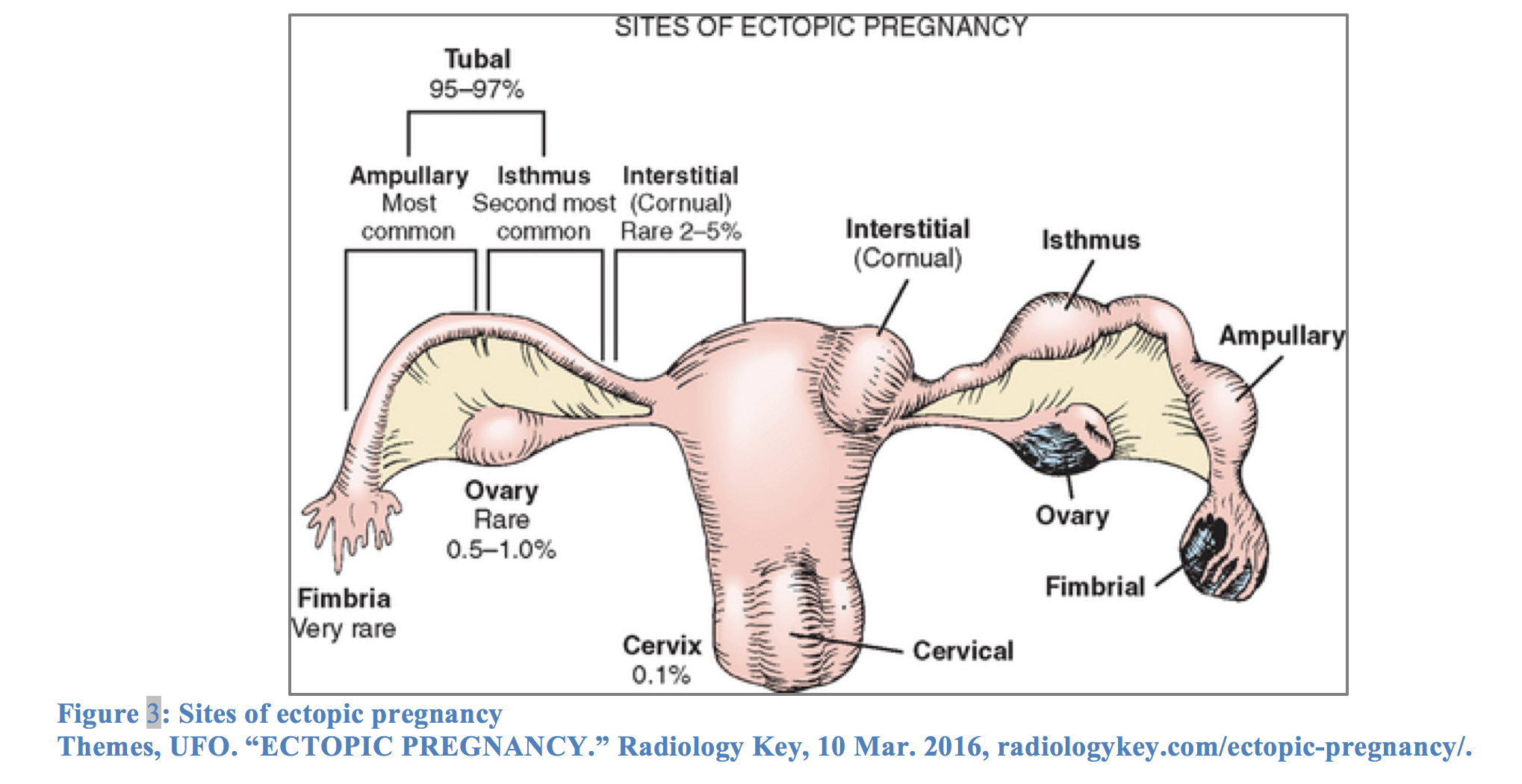
- Previous pelvic infections or surgeries
- Congenital abnormalities of the fallopian tubes
- History of prior ectopic pregnancies
- Failed tubal ligation procedures
- Use of certain contraceptive methods
- Assisted reproductive techniques
- Multiple sexual partners
- Advanced maternal age
- Cigarette smoking
Can certain medications increase the risk of ectopic pregnancy? Some studies have suggested a potential link between the use of progesterone-only birth control pills and the morning-after pill with a slightly elevated risk of ectopic pregnancy. Additionally, women who become pregnant while using an intrauterine device (IUD), particularly those containing progesterone, may have a higher chance of the pregnancy being ectopic.
Recognizing the Symptoms of Ectopic Pregnancy
Early detection of an ectopic pregnancy is crucial for preventing serious complications. While some women may not experience any symptoms initially, others may notice:
- Irregular vaginal bleeding
- Pelvic pain or discomfort
- Missed menstrual period
- Abdominal pain or tenderness
- Shoulder pain (if internal bleeding occurs)
Is it possible to have an ectopic pregnancy and still menstruate? In some cases, women with ectopic pregnancies may continue to have menstrual-like bleeding, which can make early detection challenging. This is why it’s essential to pay attention to other symptoms and seek medical attention if there’s any suspicion of pregnancy complications.

Warning Signs of a Ruptured Ectopic Pregnancy
A ruptured ectopic pregnancy is a medical emergency that requires immediate attention. Symptoms of a rupture may include:
- Sudden, severe abdominal or pelvic pain
- Dizziness or fainting
- Pale, clammy skin
- Rapid heartbeat
- Signs of shock
When does an ectopic pregnancy typically rupture? In most cases, a tubal ectopic pregnancy ruptures between 6 to 8 weeks after the last menstrual period. However, ectopic pregnancies that implant partially in the fallopian tube and partially in the uterus may rupture later, typically between 12 to 16 weeks of pregnancy.
Diagnosing Ectopic Pregnancy: Medical Procedures and Tests
Accurate and timely diagnosis of an ectopic pregnancy is crucial for providing appropriate treatment and preventing complications. Healthcare providers use a combination of methods to confirm the diagnosis:
- Physical examination: A pelvic exam may reveal tenderness or a mass in the affected area.
- Blood tests: Measuring levels of human chorionic gonadotropin (hCG) can help determine if a pregnancy is progressing normally.
- Ultrasound: Transvaginal or abdominal ultrasounds can visualize the location of the pregnancy.
- Laparoscopy: In some cases, a minimally invasive surgical procedure may be necessary to confirm the diagnosis and locate the ectopic pregnancy.
How do blood tests help in diagnosing an ectopic pregnancy? Blood tests that show low levels of hCG or a slower than expected rise in hCG levels can indicate an ectopic pregnancy. Normal pregnancies typically show a doubling of hCG levels every 48 to 72 hours, while ectopic pregnancies often exhibit a slower increase or plateau in hCG levels.

Treatment Options for Ectopic Pregnancy: Medical and Surgical Approaches
Once an ectopic pregnancy is diagnosed, prompt treatment is essential to prevent potentially life-threatening complications. The choice of treatment depends on various factors, including the location and size of the ectopic pregnancy, the woman’s overall health, and her future fertility desires.
Medical Management with Methotrexate
In some cases, especially when the ectopic pregnancy is detected early and is at low risk of rupture, medication may be used to treat the condition:
- Methotrexate is administered via injection
- It works by stopping the growth of rapidly dividing cells, including those of the ectopic pregnancy
- Follow-up blood tests are required to ensure the treatment is effective
- This approach may help preserve the fallopian tube and future fertility
What are the criteria for using methotrexate to treat ectopic pregnancy? Methotrexate is typically considered when the ectopic pregnancy is small (less than 3.5 cm in size), the woman is hemodynamically stable, and there are no signs of rupture. Additionally, the patient should be willing and able to comply with close follow-up care.
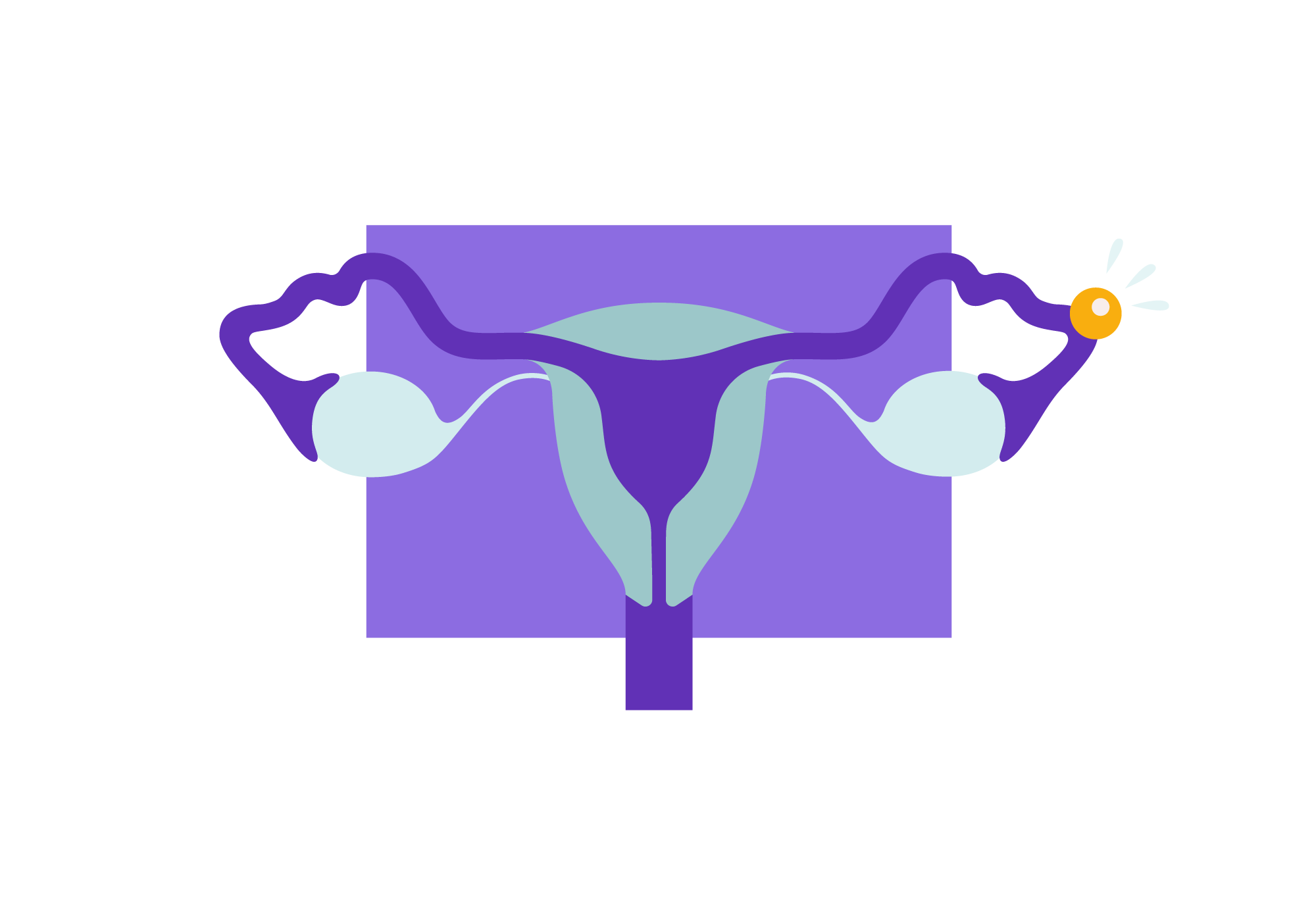
Surgical Intervention for Ectopic Pregnancy
In cases where medical management is not appropriate or has failed, surgical intervention becomes necessary:
- Laparoscopic surgery: A minimally invasive procedure to remove the ectopic pregnancy
- Salpingostomy: The ectopic pregnancy is removed while preserving the fallopian tube
- Salpingectomy: Removal of the affected fallopian tube along with the ectopic pregnancy
- Emergency surgery: Required in cases of rupture or severe bleeding
How does the choice between salpingostomy and salpingectomy affect future fertility? Salpingostomy may offer a better chance of preserving fertility by keeping the fallopian tube intact. However, the risk of recurrent ectopic pregnancy in the same tube may be higher. Salpingectomy, while removing the affected tube, may reduce the risk of future ectopic pregnancies in that location.
Potential Complications and Long-term Effects of Ectopic Pregnancy
While modern medical interventions have significantly reduced the mortality rate associated with ectopic pregnancies, this condition still carries potential risks and long-term consequences:
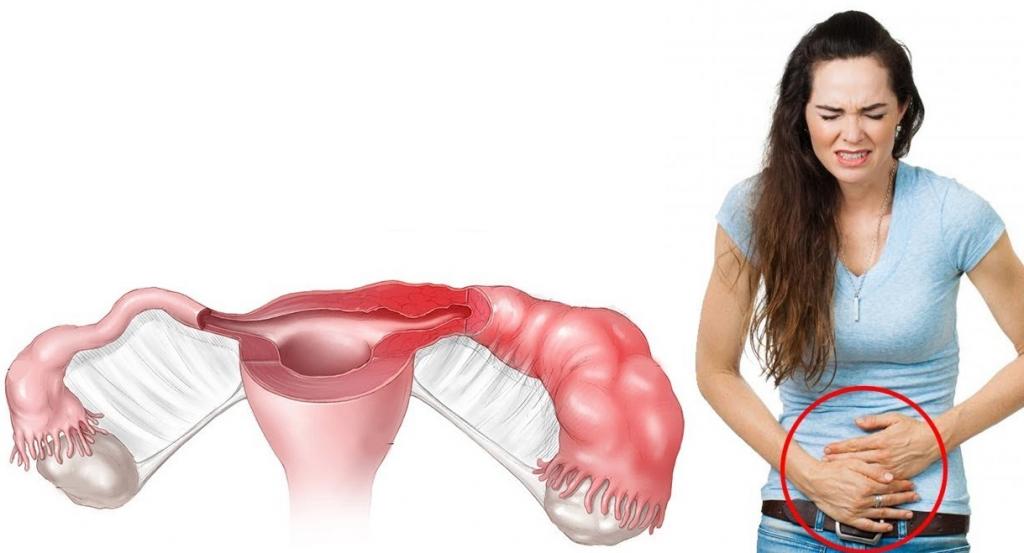
- Internal bleeding and hemorrhage
- Damage to surrounding organs
- Infertility or reduced fertility
- Increased risk of future ectopic pregnancies
- Emotional and psychological impact
What is the recurrence rate for ectopic pregnancies? Women who have experienced one ectopic pregnancy have approximately a 10-15% chance of having another in future pregnancies. This elevated risk underscores the importance of close monitoring in subsequent pregnancies.
Psychological Impact and Support
The emotional toll of an ectopic pregnancy should not be underestimated. Many women experience feelings of loss, grief, and anxiety following this traumatic event. It’s essential to provide appropriate psychological support and counseling to help women and their partners cope with the experience and prepare for future pregnancies.
Preventive Measures and Risk Reduction Strategies
While it may not be possible to prevent all ectopic pregnancies, certain measures can help reduce the risk:
- Practicing safe sex to reduce the risk of sexually transmitted infections
- Prompt treatment of pelvic inflammatory disease
- Smoking cessation
- Maintaining a healthy weight
- Considering alternative contraceptive methods if at high risk
How can women with a history of ectopic pregnancy optimize their chances of a healthy future pregnancy? Women who have experienced an ectopic pregnancy should work closely with their healthcare providers when planning future pregnancies. Early prenatal care, close monitoring, and possibly the use of early ultrasound can help ensure timely detection of any potential issues.

Advancements in Ectopic Pregnancy Research and Treatment
Ongoing research in the field of reproductive medicine continues to improve our understanding and management of ectopic pregnancies:
- Development of more sensitive and specific diagnostic tools
- Exploration of novel medical treatments with fewer side effects
- Improved surgical techniques for preserving fertility
- Investigation into the genetic and molecular factors contributing to ectopic implantation
What promising developments are on the horizon for ectopic pregnancy treatment? Researchers are exploring the potential of combination therapies using lower doses of methotrexate along with other medications to improve efficacy and reduce side effects. Additionally, advancements in early detection methods, such as biomarker identification, may allow for earlier intervention and potentially better outcomes.
The Role of Assisted Reproductive Technologies
As the use of assisted reproductive technologies (ART) becomes more widespread, understanding their impact on ectopic pregnancy risk is crucial. While ART has helped many couples achieve pregnancy, it also carries a slightly increased risk of ectopic implantation. Ongoing research aims to refine these techniques to minimize this risk while maximizing success rates.

In conclusion, ectopic pregnancy remains a significant concern in reproductive health. By increasing awareness, improving early detection methods, and advancing treatment options, healthcare providers can continue to reduce the morbidity and mortality associated with this condition. Women should be encouraged to seek prompt medical attention if they experience any symptoms suggestive of an ectopic pregnancy, particularly if they have known risk factors. With proper care and management, many women who experience an ectopic pregnancy can go on to have successful future pregnancies.
Ectopic Pregnancy – Causes, Symptoms, Treatment, Diagnosis
The Facts
An ectopic pregnancy occurs when a fertilized egg implants itself outside of the uterus. Ectopic pregnancies usually occur in a fallopian tube (called a tubal pregnancy). Occasionally, the egg may lodge itself in the ovary, and more rarely, in the cervical canal or the abdominal or pelvic cavities. The fertilized egg doesn’t usually grow into a recognizable embryo and can’t be transplanted into the uterus.
In a normal pregnancy, the egg is fertilized in the fallopian tube. Little hairs in the fallopian tube move the egg down to the uterus, where it implants itself. If there’s scar tissue in the fallopian tube, or it’s blocked for some other reason, the fertilized egg is unable to get to the uterus and the fetus will begin to grow outside of the uterus. A woman who has an ectopic pregnancy must have the pregnancy removed because the fetus can’t develop properly outside of the uterus and it can become extremely dangerous to the woman’s health. Ectopic pregnancy accounts for about 9% of pregnancy-related deaths in women.
Ectopic pregnancy accounts for about 9% of pregnancy-related deaths in women.
Although they’re becoming more common in recent years, ectopic pregnancies are generally rare. About 2% of pregnancies are ectopic.
Causes
If you’ve had an infection in the pelvic region (e.g., pelvic inflammatory disease) or pelvic surgery, or were born with a medical condition that narrowed your fallopian tubes, you have a greater chance of having an ectopic pregnancy. A previous ectopic pregnancy can also increase your risk of a second ectopic pregnancy. An unsuccessful tubal ligation, a sterilization procedure in which the fallopian tubes are cut or blocked, can contribute to the risk of an ectopic pregnancy.
Rarely, ectopic pregnancies have also been linked to the use of progesterone-only birth control pills, and the morning-after pill. Women who use intrauterine devices (IUD, a type of birth control), especially those containing progesterone, have a higher risk of having an ectopic pregnancy if they do become pregnant despite using the IUD.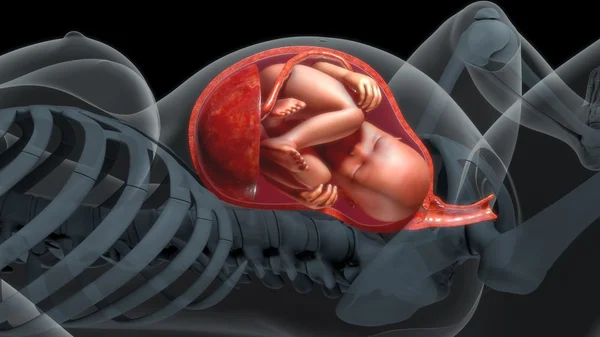 The use of certain assisted reproductive techniques may also increase the risk of ectopic pregnancy, as can having multiple sexual partners, increasing age, and cigarette smoking.
The use of certain assisted reproductive techniques may also increase the risk of ectopic pregnancy, as can having multiple sexual partners, increasing age, and cigarette smoking.
Symptoms and Complications
Irregular vaginal bleeding, pelvic pain, or a missed period can be a sign of an ectopic pregnancy, although some women with an ectopic pregnancy continue to menstruate. Most ectopic pregnancies are discovered before the woman even knows she’s pregnant.
The growing fetus can damage or rupture the tissue around the reproductive organs, causing internal bleeding and severe pain. If the pregnancy tissue grows too large, it may damage the walls of the fallopian tube. The bleeding that results can be painful and can create a feeling of fullness in the abdomen. This bleeding may start slowly or immediately be severe. Severe bleeding can cause a woman’s blood pressure to drop to the point where she shows symptoms of shock, including paleness, sweating, weakness, and faintness.
The ectopic pregnancy usually ruptures the wall of the fallopian tube in weeks 6 to 8 since the last period. An ectopic pregnancy that implants partly in the fallopian tube and partly in the uterus usually ruptures later, between weeks 12 and 16 of pregnancy. A woman whose fallopian tube has ruptured will feel severe pain that comes on suddenly, and will often faint due to massive internal bleeding in the abdomen. A rupture that occurs later in the pregnancy is very dangerous and can lead to death.
Making the Diagnosis
The doctor will do a pelvic examination, blood tests, and ultrasound to check for an ectopic pregnancy. If your blood or urine tests show you’re pregnant, but your uterus isn’t getting bigger, you may have an ectopic pregnancy. Blood tests that show low levels of human chorionic gonadotropin (hCG) or a slower than usual rise in hCG can point to an ectopic pregnancy.
An ultrasound scan will then be done to see if the uterus is empty./medical-illustration-of-fetus-development-at-9-weeks--188058327-599b1383d088c00011376729.jpg) The scan can also show blood in the abdominal or pelvic cavities. A fibre-optic tube attached to a camera called a laparascope can be inserted through the abdomen to allow the doctor to look inside the uterus.
The scan can also show blood in the abdominal or pelvic cavities. A fibre-optic tube attached to a camera called a laparascope can be inserted through the abdomen to allow the doctor to look inside the uterus.
Treatment and Prevention
If an ectopic pregnancy occurs, the doctor must remove the fetus and placenta from the fallopian tube or other area where it has become implanted. This may be done by using the medication methotrexate or laparoscopic surgery.
The medication methotrexate is used to treat early tubal pregnancies in cases where the ectopic pregnancy is believed to be at a low risk of rupturing. It causes the pregnancy to break down and be reabsorbed. Methotrexate is successful in over 85% of cases.
Laparoscopic surgery is also used as a treatment option for ectopic pregnancy if the woman’s health is unstable, if there are reasons not to use methotrexate, or in cases of non-tubal ectopic pregnancies, later-term tubal pregnancies, or tubal pregnancies where there is a significant risk of rupture.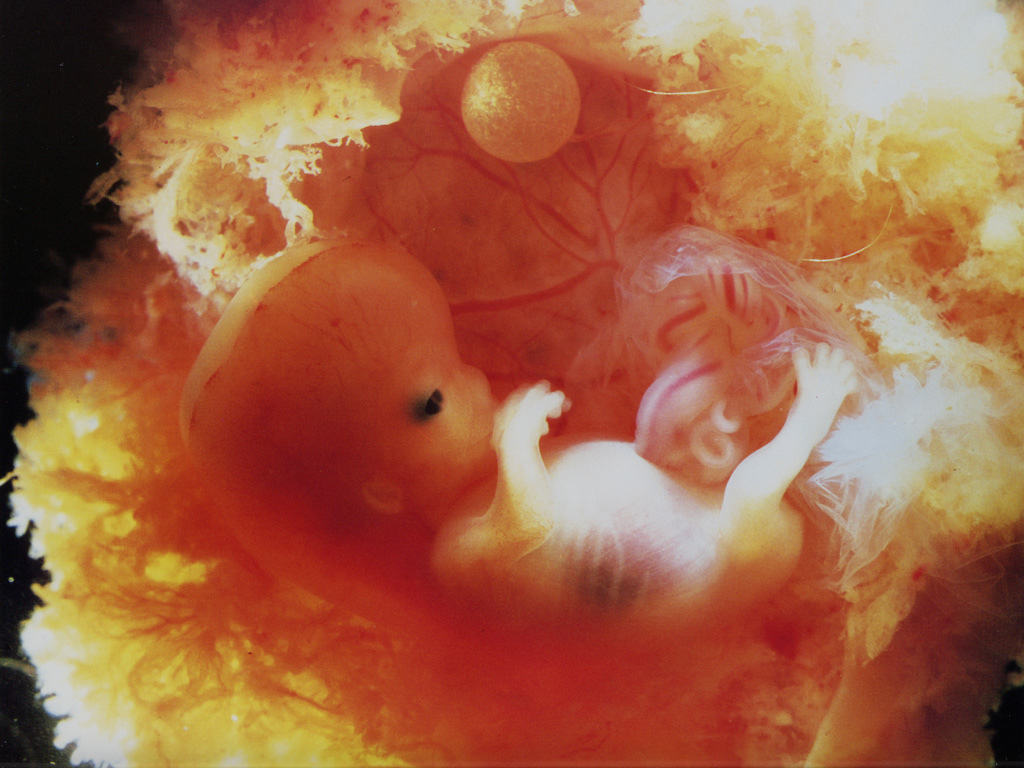 In this procedure, the doctor inserts a thin tube through small incisions into the abdominal cavity. The tube has a camera and surgical instruments attached to it.
In this procedure, the doctor inserts a thin tube through small incisions into the abdominal cavity. The tube has a camera and surgical instruments attached to it.
If the pregnancy is in the fallopian tube, the tube is cut and left to heal naturally, so that scar tissue from the wound doesn’t block the fallopian tube. A blocked fallopian tube can make it difficult for a woman to have another baby. In many cases, the fallopian tube must be removed because it’s been severely damaged as a result of the ectopic pregnancy. A woman with only one fallopian tube can still become pregnant. If there has been severe bleeding, a blood transfusion may be needed.
While it is not possible to prevent all forms of ectopic pregnancy, there are a few things you can do to reduce your risk of a tubal ectopic pregnancy (an ectopic pregnancy occurring in the fallopian tube), which is the most common type of ectopic pregnancy. Pelvic inflammatory disease (PID) and sexually transmitted infections (STIs) are frequent causes of tubal ectopic pregnancies.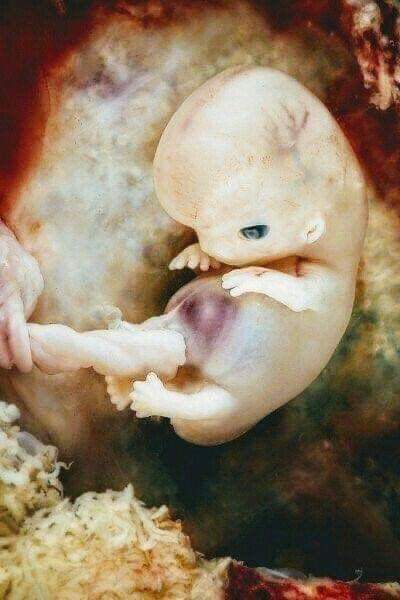 Both are preventable. Talk to your doctor about ways to reduce your risk of PID and STIs, such as using condoms and quickly seeking treatment for any infections of the genitals, abdomen, or bladder areas.
Both are preventable. Talk to your doctor about ways to reduce your risk of PID and STIs, such as using condoms and quickly seeking treatment for any infections of the genitals, abdomen, or bladder areas.
All material copyright MediResource Inc. 1996 – 2021. Terms and conditions of use. The contents herein are for informational purposes only. Always seek the advice of your physician or other qualified health provider with any questions you may have regarding a medical condition. Source: www.medbroadcast.com/condition/getcondition/Ectopic-Pregnancy
Ectopic pregnancy – NHS
An ectopic pregnancy is when a fertilised egg implants itself outside of the womb, usually in one of the fallopian tubes.
The fallopian tubes are the tubes connecting the ovaries to the womb. If an egg gets stuck in them, it won’t develop into a baby and your health may be at risk if the pregnancy continues.
Unfortunately, it’s not possible to save the pregnancy. It usually has to be removed using medicine or an operation.
It usually has to be removed using medicine or an operation.
In the UK, around 1 in every 90 pregnancies is ectopic. This is around 11,000 pregnancies a year.
Symptoms of an ectopic pregnancy
An ectopic pregnancy doesn’t always cause symptoms and may only be detected during a routine pregnancy scan.
If you do have symptoms, they tend to develop between the 4th and 12th week of pregnancy.
Symptoms can include a combination of:
But these symptoms aren’t necessarily a sign of a serious problem. They can sometimes be caused by other problems, such as a stomach bug.
Read more about the symptoms of an ectopic pregnancy.
When to get medical advice
Contact your GP or call NHS 111 if you have a combination of any of the above symptoms and you might be pregnant – even if you haven’t had a positive pregnancy test.
An ectopic pregnancy can be serious, so it’s important to get advice right away.
Your GP will ask about your symptoms and you’ll usually need to do a pregnancy test to determine if you could have an ectopic pregnancy.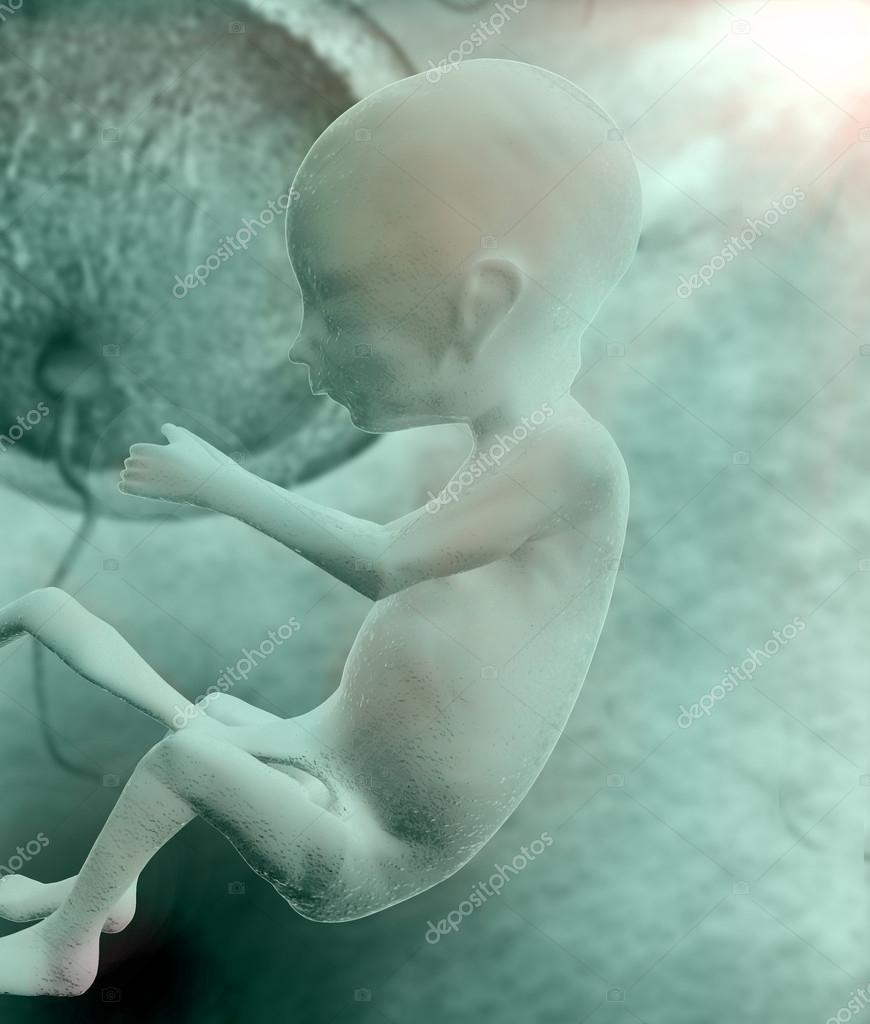
You may be referred to a specialist early pregnancy clinic for further assessment, where an ultrasound scan and blood tests may be carried out to confirm the diagnosis.
Read more about ectopic pregnancy tests.
When to get emergency help
Call 999 for an ambulance or go to your nearest accident and emergency (A&E) department immediately if you experience a combination of:
- a sharp, sudden and intense pain in your tummy
- feeling very dizzy or fainting
- feeling sick
- looking very pale
These symptoms could mean that your fallopian tube has split open (ruptured). This is very serious and surgery to repair the fallopian tube needs to be carried out as soon as possible.
A rupture can be life threatening, but fortunately they’re uncommon and treatable, if dealt with quickly. Deaths from ruptures are extremely rare in the UK.
How an ectopic pregnancy is treated
There are 3 main treatments for an ectopic pregnancy:
- expectant management – you’re carefully monitored and 1 of the treatments below is used if the fertilised egg doesn’t dissolve by itself
- medication – an injection of a powerful medicine called methotrexate is used to stop the pregnancy growing
- surgery – keyhole surgery (laparoscopy) is performed under general anaesthetic to remove the fertilised egg, usually along with the affected fallopian tube
You’ll be told about the benefits and risks of each option. In many cases, a particular treatment will be recommended based on your symptoms and the results of the tests you have.
In many cases, a particular treatment will be recommended based on your symptoms and the results of the tests you have.
Some treatments may reduce your chances of being able to conceive naturally in the future, although most women will still be able to get pregnant. Talk to your doctor about this.
Read more about treating an ectopic pregnancy.
Help and support after an ectopic pregnancy
Losing a pregnancy can be devastating, and many women feel the same sense of grief as if they had lost a family member or partner.
It’s not uncommon for these feelings to last several months, although they usually improve with time. Make sure you give yourself and your partner time to grieve.
If you or your partner are struggling to come to terms with your loss, you may benefit from professional support or counselling. Speak to your GP about this.
Support groups for people who have been affected by loss of a pregnancy can also help.
These include:
Read more about dealing with loss and find bereavement support services in your area.
Trying for another baby
You may want to try for another baby when you and your partner feel physically and emotionally ready.
You’ll probably be advised to wait until you’ve had at least 2 periods after treatment before trying again to allow yourself to recover.
If you were treated with methotrexate, it’s usually recommended that you wait at least 3 months because the medicine could harm your baby if you become pregnant during this time.
Most women who have had an ectopic pregnancy will be able to get pregnant again, even if they’ve had a fallopian tube removed.
Overall, 65% of women achieve a successful pregnancy within 18 months of an ectopic pregnancy. Occasionally, it may be necessary to use fertility treatment such as IVF.
The chances of having another ectopic pregnancy are higher if you’ve had one before, but the risk is still small (around 10%).
If you do become pregnant again, it’s a good idea to let your GP know as soon as possible so early scans can be carried out to check everything is OK.
What can cause an ectopic pregnancy?
In many cases, it’s not clear why a woman has an ectopic pregnancy. Sometimes it happens when there’s a problem with the fallopian tubes, such as them being narrow or blocked.
The following are all associated with an increased risk of ectopic pregnancy:
- pelvic inflammatory disease (PID) – inflammation of the female reproductive system, usually caused by a sexually transmitted infection (STI)
- previous ectopic pregnancy – the risk of having another ectopic pregnancy is around 10%
- previous surgery on your fallopian tubes – such as an unsuccessful female sterilisation procedure
- fertility treatment, such as IVF – taking medication to stimulate ovulation (the release of an egg) can increase the risk of ectopic pregnancy
- becoming pregnant while using an intrauterine device (IUD) or intrauterine system (IUS) for contraception – it’s rare to get pregnant while using these, but if you do you’re more likely to have an ectopic pregnancy
- smoking
- increasing age – the risk is highest for pregnant women aged 35 to 40
You can’t always prevent an ectopic pregnancy, but you can reduce your risk by using a condom when not trying for a baby to protect yourself against STIs, and by stopping smoking if you smoke.
Page last reviewed: 27 November 2018
Next review due: 27 November 2021
‘Parents can look at their foetus in real time’: are artificial wombs the future? | Pregnancy
The lamb is sleeping. It lies on its side, eyes shut, ears folded back and twitching. It swallows, wriggles and shuffles its gangly legs. Its crooked half-smile makes it look content, as if dreaming about gambolling in a grassy field. But this lamb is too tiny to venture out. Its eyes cannot open. It is hairless; its skin gathers in pink rolls at its neck. It hasn’t been born yet, but here it is, at 111 days’ gestation, totally separate from its mother, alive and kicking in a research lab in Philadelphia. It is submerged in fluid, floating inside a transparent plastic bag, its umbilical cord connected to a nexus of bright blood-filled tubes. This is a foetus growing inside an artificial womb. In another four weeks, the bag will be unzipped and the lamb will be born.
When I first see images of the Philadelphia lambs on my laptop, I think of the foetus fields in The Matrix, where motherless babies are farmed in pods on an industrial scale. But this is not a substitute for full gestation. The lambs didn’t grow in the bags from conception; they were taken from their mothers’ wombs by caesarean section, then submerged in the Biobag, at a gestational age equivalent to 23-24 weeks in humans. This isn’t a replacement for pregnancy yet, but it is certainly the beginning.
But this is not a substitute for full gestation. The lambs didn’t grow in the bags from conception; they were taken from their mothers’ wombs by caesarean section, then submerged in the Biobag, at a gestational age equivalent to 23-24 weeks in humans. This isn’t a replacement for pregnancy yet, but it is certainly the beginning.
The team who made these artificial wombs say they are driven only by the desire to save the most vulnerable humans on Earth. Emily Partridge, Marcus Davey and Alan Flake are neonatologists, developmental physiologists and surgeons who work with extremely premature babies at the Children’s Hospital of Philadelphia (CHOP). After three years of tweaking, their latest prototype is designed to give babies born too soon a greater chance of survival than ever before.
From left: Alan Flake, Emily Partridge, and Marcus Davey, creators of the Biobag. Photograph: Children’s Hospital of Philadelphia
The Biobag was born into public consciousness in April 2017, when the CHOP team published their research in the journal Nature Communications.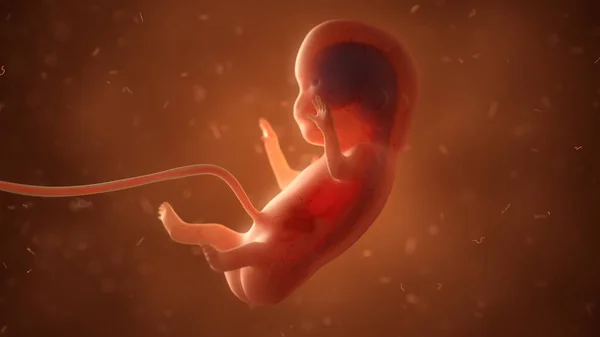 They had found a way to gestate sheep foetuses outside maternal bodies; foetuses that would eventually become lambs no different from those that had grown in ewes’ wombs. (Sheep are the go-to animals in obstetric research because they have a long gestation period and the foetuses are around the same size as ours.)
They had found a way to gestate sheep foetuses outside maternal bodies; foetuses that would eventually become lambs no different from those that had grown in ewes’ wombs. (Sheep are the go-to animals in obstetric research because they have a long gestation period and the foetuses are around the same size as ours.)
Their invention consists of a replacement placenta: an oxygenator plugged into the lamb’s umbilical cord, which also removes carbon dioxide and delivers nutrients. Blood is pumped entirely by the beating of the foetus’s heart, just as it would be in the womb. The bag acts like an amniotic sac filled with warm, sterile, lab-made fluid that the lamb breathes and swallows, just as a human foetus would.
CHOP’s communications department released a very slick short film, Recreating The Womb, to coincide with the paper’s release. There is not a foetus in sight. Instead there are neat diagrams of lambs in Biobag systems, slightly awkward footage of Partridge, Flake and Davey pretending to do lambless lamb research in a pristine lab and heartbreaking clips of impossibly small super-premature babies. Then there are carefully edited interviews with the team. “In the future, we envision the system will be in the neonatal intensive care unit and will look pretty much like a traditional incubator,” Davey says. The Biobags would be kept in a darkened environment to mimic the human womb, but the babies would be visible as never before: “Parents can actually look at their foetus in real time,” Flake adds.
Then there are carefully edited interviews with the team. “In the future, we envision the system will be in the neonatal intensive care unit and will look pretty much like a traditional incubator,” Davey says. The Biobags would be kept in a darkened environment to mimic the human womb, but the babies would be visible as never before: “Parents can actually look at their foetus in real time,” Flake adds.
Normal human pregnancy is 40 weeks; any baby born before 37 weeks is considered premature. The 23-24-week period is the border of viability, after which modern medicine currently has a hope of keeping babies alive, and doctors will attempt to resuscitate a newborn. To the NHS, a baby born dead at 24 weeks is classed as a stillbirth, whereas a dead baby born at 23 weeks and six days is a miscarriage. It is a brutal boundary.
A lamb cannulated at 107 days’ gestation, on day four in a Biobag. Photograph: nature.com/Children’s Hospital of Philadelphia
In countries with good hospitals, there is a 24% chance of keeping a baby born at 23 weeks alive.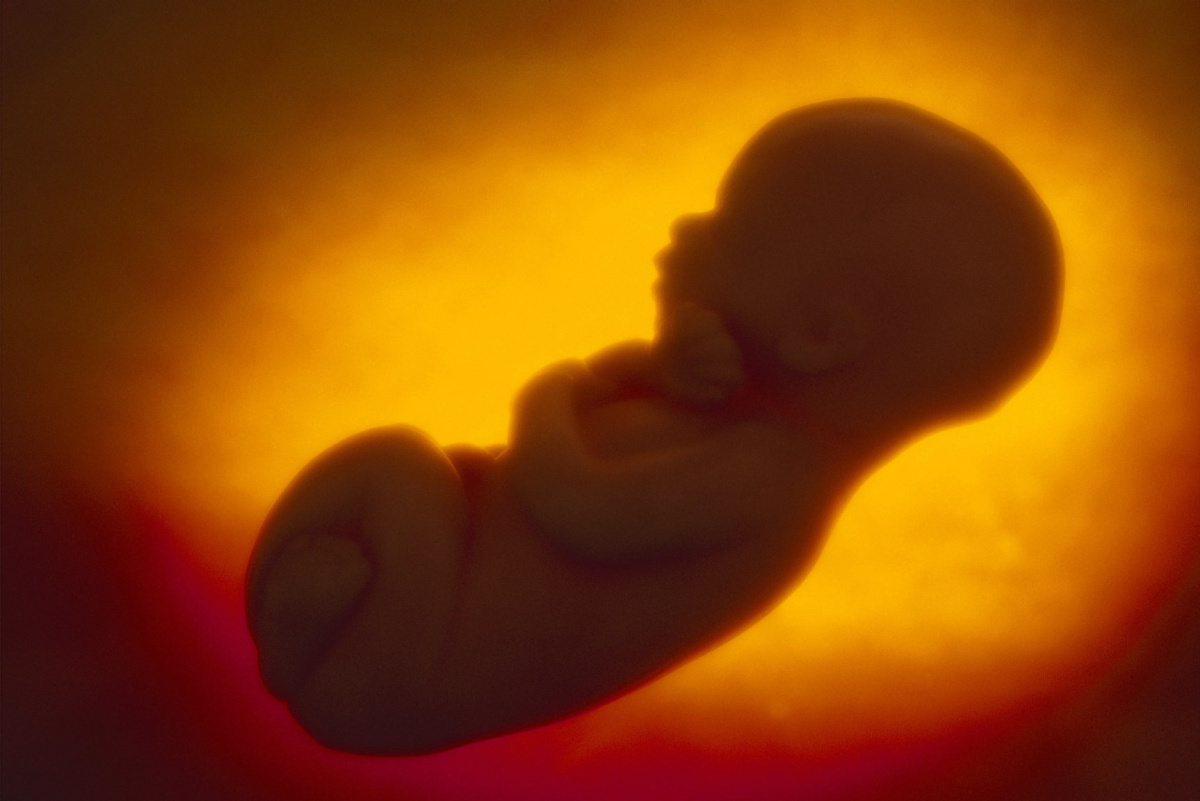 But 87% of those who make it will experience major complications, such as lung disease, bowel problems, brain damage and blindness. While more extremely premature babies are surviving in wealthier countries, the number growing up with chronic conditions has also increased dramatically. Preterm birth is the greatest cause of death and disability among children under five in the developed world.
But 87% of those who make it will experience major complications, such as lung disease, bowel problems, brain damage and blindness. While more extremely premature babies are surviving in wealthier countries, the number growing up with chronic conditions has also increased dramatically. Preterm birth is the greatest cause of death and disability among children under five in the developed world.
Incubators deal with some of the functions a premature newborn needs help with, but they don’t allow for the process of gestation to continue; the Biobag does, treating the baby as a foetus who has not yet been born. Women at risk of going into very early labour could have their babies transferred into an artificial womb. It sounds extreme, but if it could mean a healthy future instead of illness and disability, who could deny it to them?
The CHOP researchers want their device to be seen as ethically unremarkable. “Our goal is not to extend the limits of viability, but to offer the potential for improved outcomes for those infants already being routinely resuscitated,” their paper says.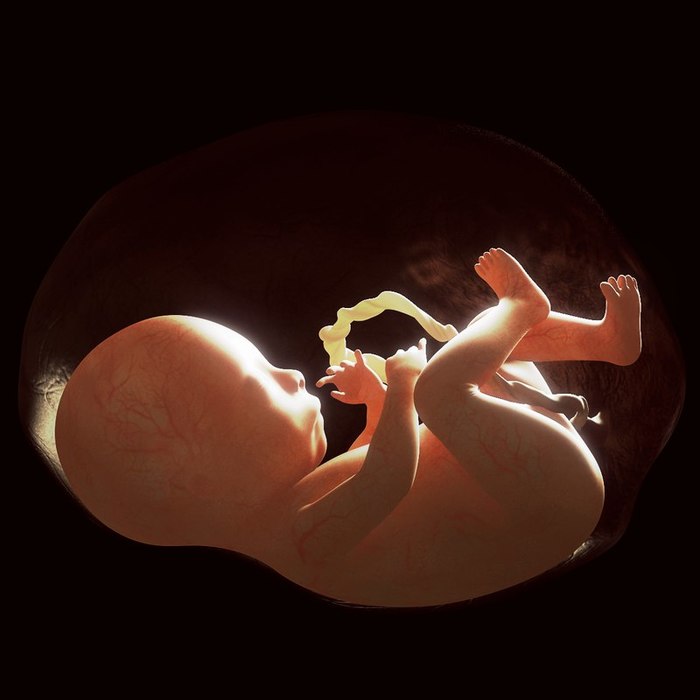 Extending the current limits of a foetus’s viability would create an ethical minefield. The legal abortion limit in the UK was brought down from 28 to 24 weeks in 1990 because advances in neonatal care meant foetuses born then were more likely to live. If artificial wombs help ever smaller babies survive, that could have profound implications for women. But women are not mentioned in CHOP’s work.
Extending the current limits of a foetus’s viability would create an ethical minefield. The legal abortion limit in the UK was brought down from 28 to 24 weeks in 1990 because advances in neonatal care meant foetuses born then were more likely to live. If artificial wombs help ever smaller babies survive, that could have profound implications for women. But women are not mentioned in CHOP’s work.
The application to patent the Biobag, filed in 2014, is revealing. There’s no coyness about extending the limits of human viability here: it explicitly says possible “subjects” include “pre-viable foetuses (eg 20–24 weeks)”.
I am not allowed to go to Philadelphia to see the team’s work. I so nearly was: Flake told me I was welcome, and we fixed a date. But then I was suddenly unwelcome. They want to be able to put human babies inside the Biobag within a couple of years, and the prospect of my visit had made the legal department twitchy. “There is a lot of caution to do anything that could jeopardise FDA approval,” a press officer told me.
“This is not a new field,” says Matt Kemp, wearily. He runs the perinatal lab at the Women & Infants Research Foundation (WIRF) in Western Australia, and his team’s artificial womb, Ex-Vivo Uterine Environment or EVE therapy, reported its first great successes in a paper published a few months after CHOP’s. The Biobag stole EVE’s thunder, and though Kemp makes little reference to it, he does sound somewhat narked.
“The Karolinska Institute in Sweden published a paper in 1958 showing the use of this sort of platform with pre-viable human foetuses,” he says. “Groups in Canada in the early 60s experimented with sheep using this system. As early as 1963, the Japanese did seminal work in the field… Anyone who tells you they have done this for the first time is being disingenuous.” He doesn’t name names.
In the incubator there is a lamb, its chest rising and falling, submerged in yellowish fluid in a transparent bag
There is no patent application for EVE (“It’s not patentable,” Kemp says, exasperated, “this has all been in the public domain since 1958”), so he is happy to answer questions – unless they are about the reason he decided to name his artificial womb after the first woman and the mother of mankind. He doesn’t want to get drawn into discussions about the symbolism of his work: “It was just a convenient way of describing it, I guess.”
He doesn’t want to get drawn into discussions about the symbolism of his work: “It was just a convenient way of describing it, I guess.”
Kemp has been developing EVE since 2013, with researchers at Tohoku University hospital in Sendai, Japan. No official images have been released, but I found a YouTube video uploaded to the WIRF channel. It looked as if it wasn’t supposed to be online (and has since been removed): it was clearly filmed on a phone and had had only 56 views in a year. After CHOP’s carefully sanitised images, this 44-second clip made my jaw drop.
It begins with beeping monitors in a neonatal intensive care unit; a healthy heartbeat thumping in red on a black screen. The camera pans to an incubator beside it and instead of a baby there is a lamb, its chest rising and falling, lying in yellowish fluid in a transparent bag from which protrudes a mass of tubes, like veins filled with blood. This is what an artificial womb really looks like.
‘Incubators deal with some of the functions a premature newborn needs help with, but they don’t allow for the process of gestation to continue. ’ Photograph: Liz McBurney/The Guardian
’ Photograph: Liz McBurney/The Guardian
The big difference between the work of WIRF and CHOP is the age of the lambs. The youngest foetus put into the Biobag was 106 days; EVE’s was 95. Kemp is cautious about translating this into human terms, but it’s between 21 and 23 weeks. No one else has ever reported working with foetuses this young. And while CHOP grew their lambs for several weeks, often to term, and let some live, Kemp’s team kept them in the artificial womb for a week, then killed all of them to analyse their organs. He says they could easily have kept them alive for longer: “These are stable, healthy animals.”
Even in a week, the lambs change dramatically, putting on weight and flexing and swallowing. “I’ve never been pregnant,” Kemp says, “but my wife says a foetus does those movements. It kicks, has a wee wiggle and goes back to sleep.”
But clinical trials involving human babies are a long way off. “Anyone who tells you they are going to be doing this in two years either has a wealth of data that is not in the public domain or is being a bit sensationalist.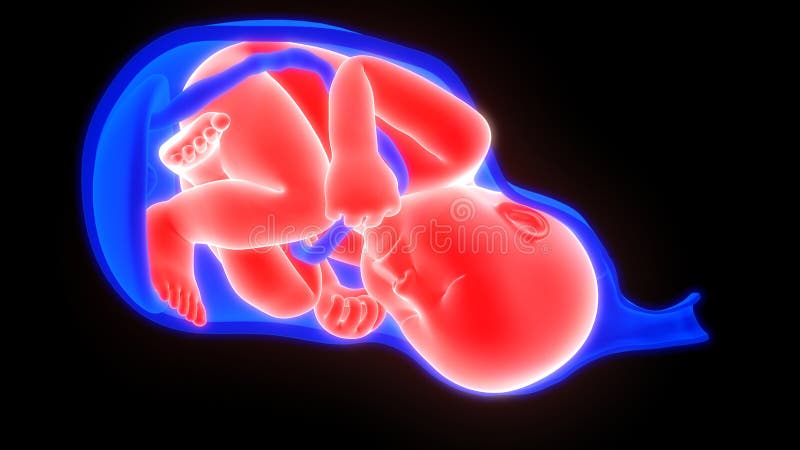 ”
”
Is he talking about anyone in particular?
I lost a baby at 20 weeks. If a fake womb might save a sick foetus, could it also save a healthy 20-week-old?
“I am not,” he says firmly. “All the experiments to date have been done on foetuses that come from healthy pregnancies. That’s simply not the case for a 21- or 22-week human foetus. These are not going to be healthy babies. Getting this into clinical use is going to be incredibly difficult. To create an argument an ethical committee will buy, you’ve got to have an odds-on chance of delivering an outcome far better than the technology currently in use,” he says. “What is the likely first demographic? A very sick 21-week foetus.”
This floors me. I lost a baby at 20 weeks – a son, who would have been my second child. There was nothing wrong with him. He was perfect. I got appendicitis when I was nearly 19 weeks pregnant. I spent a week in hospital while obstetricians and gynaecologists scanned and poked, trying to work out why I was ill.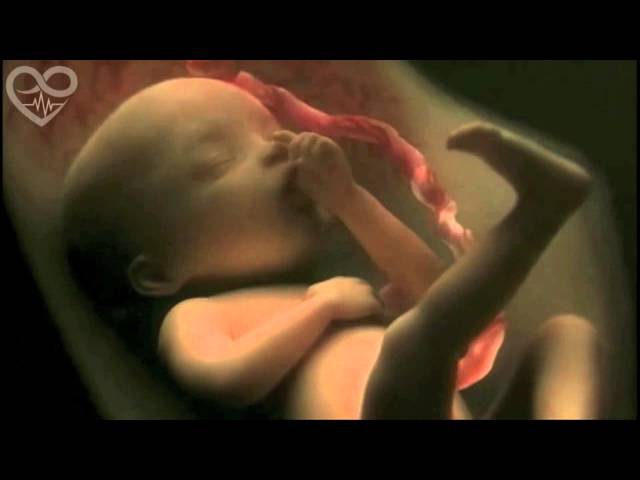 And then I went into labour. It happens: if you are pregnant, a serious infection can cause your cervix to open. In between contractions, the obstetrician told me if I had been 24 weeks pregnant, everything would have been different. Even though my son was a proper baby, who was wrapped up and given to me to hold, he died while I was giving birth to him. A miscarriage, not a stillbirth.
And then I went into labour. It happens: if you are pregnant, a serious infection can cause your cervix to open. In between contractions, the obstetrician told me if I had been 24 weeks pregnant, everything would have been different. Even though my son was a proper baby, who was wrapped up and given to me to hold, he died while I was giving birth to him. A miscarriage, not a stillbirth.
This happened three years ago. Since then, I’ve had my appendix out, and had a daughter. But, like anyone who has lost a baby, I will always be haunted by what could have been done differently. If an artificial womb might save the life of a very sick 21-week-old foetus, could it also save a 20-week-old who was perfectly healthy, but unlucky enough to be inside a woman who was ill?
I swallow hard. “If the first time you put a human foetus in your system,” I say, “it will be one not viable otherwise, questions will come up about pushing the boundaries of viability. Can’t you imagine parents of even more premature babies wanting their child to have any chance an artificial womb might offer?”
“This is a really easy question,” he says. “This is a human – or a foetus, or a baby – that’s sick. If you had a three-year-old that was unwell and somebody was developing a new therapy, would you have any qualms about that?”
“This is a human – or a foetus, or a baby – that’s sick. If you had a three-year-old that was unwell and somebody was developing a new therapy, would you have any qualms about that?”
“Of course not.”
“So there you go. From our perspective, this is no different.”
In other words, so long as they have a chance to save a baby’s life, they will try to do it. But there are limits.
“We don’t think we are shifting the border of viability further and further: if you can’t get a catheter in and the heart is not sufficiently developed to drive blood through the system, it’s not going to work. So any concerns about harvesting eggs and putting them into these artificial devices are completely abrogated by that. It’s just not practically possible.”
Dr Anna Smajdor, a bioethicist at Oslo university who believes that pregnancy is barbaric. Photograph: courtesy of Anna Smajdor
As we get better at extending the lives of embryos outside the womb, and keeping ever more premature babies alive, there will come a time when those two points meet.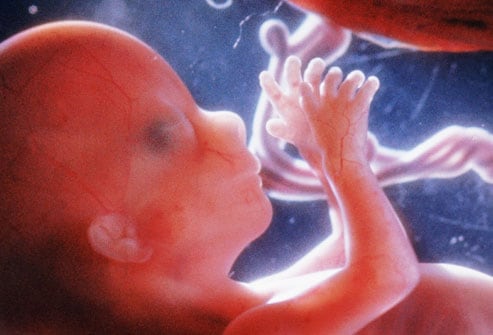 The obstacles will be legal and ethical, not technological. IVF was once science fiction, then an ethical conundrum, then the cutting edge of assisted reproduction. Now it’s a normal part of making families. Once bags and tubes can replace a womb, pregnancy and birth will be fundamentally redefined. If gestation no longer has to take place inside a woman’s body, it will no longer be female. And the meaning of motherhood will also be changed, for ever.
The obstacles will be legal and ethical, not technological. IVF was once science fiction, then an ethical conundrum, then the cutting edge of assisted reproduction. Now it’s a normal part of making families. Once bags and tubes can replace a womb, pregnancy and birth will be fundamentally redefined. If gestation no longer has to take place inside a woman’s body, it will no longer be female. And the meaning of motherhood will also be changed, for ever.
“Pregnancy is barbaric,” Dr Anna Smajdor declares. “If there were any disease that caused the same problems, we would regard it as very serious.” I am sitting in her office at the University of Oslo, opposite a calendar featuring photographs of her cats. She is a bioethicist and associate professor of practical philosophy, but has the air of a mischievous teenager.
“The number of women who suffer tears and incontinence, and things that damage them for the rest of their lives is really high, yet it’s not adequately recognised,” she continues.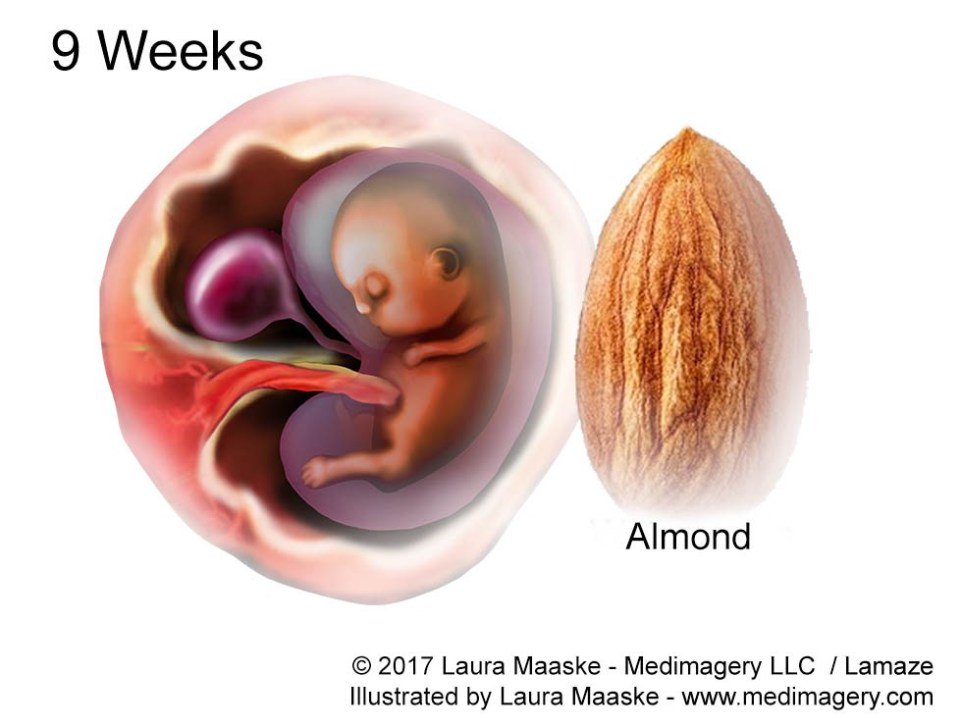 “This is all tied up with the strong value we attach not just to motherhood, but to giving birth.”
“This is all tied up with the strong value we attach not just to motherhood, but to giving birth.”
I’ve been eager to meet Smajdor since I read her groundbreaking academic papers on artificial wombs. She argues that ectogenesis – reproduction outside the human body – would allow reproductive labour to be redistributed fairly in society, so there is a moral imperative for more research.
“There’s an unquestioned assumption that women will have babies, and a failure to notice how bizarre it is that we have to produce new human beings out of our own bodies. And how dangerous that is.”
To demonstrate her point, she tells me about a colleague having a wisdom tooth out. Smajdor suggested they film it, as a beautiful experience to savour: “Here it comes! And look, here’s the stitching! Wow – you did that without any painkillers!”
The comparison is completely perverse, but I can see her point. Our attitude to birth is very strange. There is blood, pain and stitching even if it all goes well, and we are meant to ignore it.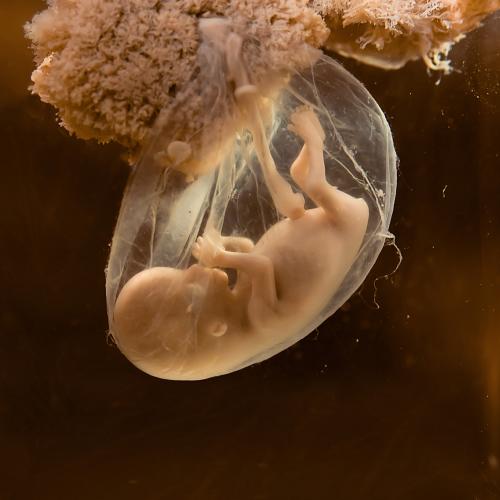 Maternal mortality and stillbirth rates are going down globally, but Smajdor says that isn’t necessarily all good news. “The more medicine advances, the more women get scathed. I see a trajectory towards knowing so much about the foetus, and what’s good or bad for it, that women become almost ectogenetic gestators themselves, their whole function about maximising what’s good for the baby.”
Maternal mortality and stillbirth rates are going down globally, but Smajdor says that isn’t necessarily all good news. “The more medicine advances, the more women get scathed. I see a trajectory towards knowing so much about the foetus, and what’s good or bad for it, that women become almost ectogenetic gestators themselves, their whole function about maximising what’s good for the baby.”
Pregnancy is remarkable, but I have never felt more like a thing, being acted on by doctors
I have definitely felt like an ectogenetic gestator. I have had to lie back while a 20cm needle was plunged into my belly so doctors could extract my son’s DNA because something on a scan made them think he might have Down’s syndrome. (He didn’t, but then I got appendicitis.) I have had to stop myself from gagging while forcing down a cloying glucose concoction because a late scan of my daughter showed I might have gestational diabetes. (I didn’t.) I have had to lie with my legs clamped apart while a surgeon stitched up my cervix because a scan showed I was at risk of going into another early labour. Being pregnant is a remarkable experience, and I loved carrying my first child, but I have never felt more like a thing, being acted upon purely because my very dedicated doctors knew too much about what might be going on inside me.
Being pregnant is a remarkable experience, and I loved carrying my first child, but I have never felt more like a thing, being acted upon purely because my very dedicated doctors knew too much about what might be going on inside me.
Smajdor was “not very surprised” when she saw CHOP’s lambs. “Those people were clever in their – ” she chooses the word carefully – “marketing. And, of course, being unwilling to talk about ectogenesis is part of the PR approach.” Instead of pouring resources into saving premature babies, she says we should be growing them in artificial wombs from the start, “because it’s a trauma for the foetus, being removed from the uterus, even if it then goes into a Biobag and survives”.
Smajdor uses provocative ideas to raise difficult questions. It works: she has made me think about how messed up our notions of what “normal” childbirth, pregnancy and motherhood are.
If perfect ectogenesis could ever exist, there is a long list of women who would want to use it: women with epilepsy, bipolar disorder or cancer, for whom pregnancy would mean risking either their own or their foetuses’ lives by stopping or starting medication; women who have had their wombs removed for medical reasons. Ectogenesis will also help women in circumstances much less likely to attract public sympathy: social surrogacy clients and older women, whose male equivalents have babies without a thought. You could conceive an embryo while you’re young and grow it in a bag after you retire.
Ectogenesis will also help women in circumstances much less likely to attract public sympathy: social surrogacy clients and older women, whose male equivalents have babies without a thought. You could conceive an embryo while you’re young and grow it in a bag after you retire.
But perhaps the people most likely to be emancipated by this technology are those not born female: single men, gay men and trans women desperate for their own biological children. I ask Smajdor about the benefits of ectogenesis for them.
“I don’t support anyone’s right to have a child. I support people’s right not to have their body interfered with.” Then she leaves the world of philosophical logic for a moment. “Assuming we could get perfect ectogenesis, it seems like a thing we should do, in a fully just society. The problem is that our societies are not fully just. In a society that believes natural reproduction is the most amazing part of a woman’s life, ectogenesis is going to be very problematic, and more likely to be used in ways that are detrimental to women.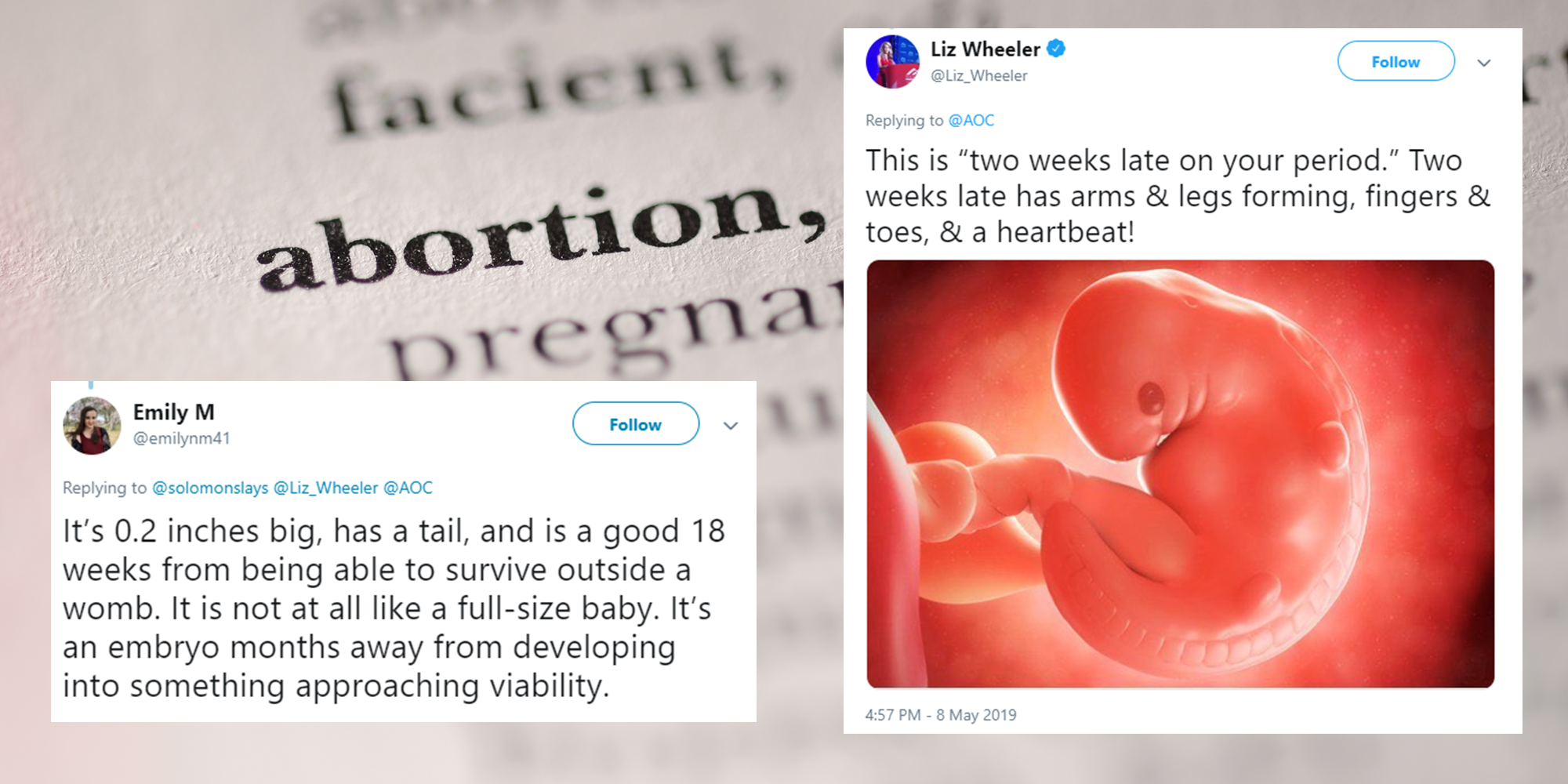 ”
”
“What kind of ways?”
“When we talk about rescuing very premature babies, there’s a risk of a desire to rescue babies because their mother is not fit to carry the foetus,” Smajdor says. Across the world, inappropriate behaviour during pregnancy is increasingly viewed as child abuse. Since the 50s, dozens of US states have prosecuted women for using drugs while pregnant. If you can save a baby from the dangers of premature birth, would you not be prepared to save it from a reckless mother?
It’s easy to imagine a future where the kind of “help” already offered by employers in Silicon Valley and beyond, enabling staff to freeze their eggs so they can focus on their careers, might include the option to grow their babies in an artificial womb. Using a real womb, inside the body, could ultimately become a sign of poverty, of chaotic lives, of unplanned pregnancy, or of being a borderline-dangerous “freebirther”, choosing to have a baby without any medical input.
The greatest existential threat faced by unborn babies today doesn’t come from women “unfit” to be pregnant, but from unwilling mothers.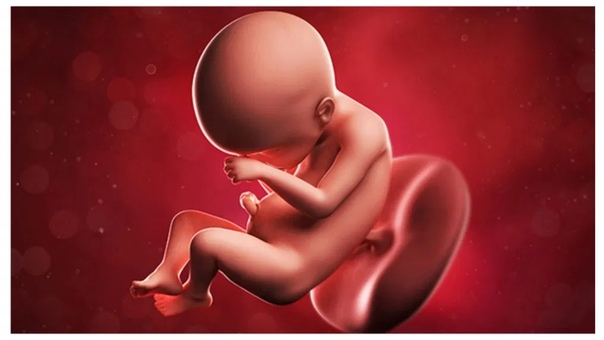 Once a woman’s body is no longer the incubator, abortion can be both pro-choice and pro-life. In the ectogenetic future, foetuses aborted by mothers who didn’t want them to exist could be “rescued” and adopted. In that world, some women might seek out backstreet abortions that would end their babies’ lives, rather than legal ones that would allow them to live. It’s a horrifying thought. But it could happen if the foetus’s right to life trumps that of a woman to refuse to become a mother.
Once a woman’s body is no longer the incubator, abortion can be both pro-choice and pro-life. In the ectogenetic future, foetuses aborted by mothers who didn’t want them to exist could be “rescued” and adopted. In that world, some women might seek out backstreet abortions that would end their babies’ lives, rather than legal ones that would allow them to live. It’s a horrifying thought. But it could happen if the foetus’s right to life trumps that of a woman to refuse to become a mother.
Artificial wombs will be an incredibly powerful new technology. How that power will manifest itself depends on who is demanding, making, controlling and paying for the technology. Once IVF became mainstream, research into treating fertility problems such as blocked fallopian tubes all but stopped. Why bother, if the problem can be circumvented by assisted reproduction? The same could happen with research that makes it easier and safer for women to have babies without being sliced, probed and torn. What’s the point, if the solution is already there?
What’s the point, if the solution is already there?
Women gain so much more than we lose by bearing children: the creative power of being a mother, the right to choose whether to become a parent at all. Can the freedom to have babies without being pregnant be worth sacrificing any of this?
Full ectogenesis will not exist for decades, but artificial wombs are coming. We need to ensure that, when they do arrive, it’s in a society that values women for more than just their reproductive capacity, and that they are put to use for the benefit of people who can’t be pregnant for biological rather than social reasons. We do still have time. But the race to innovate means maybe not enough.
“This certainly is a project that would have sounded more like science fiction,” Emily Partridge says at the end of the CHOP video. “But over three years of doggedly pursuing it, it has become very real.”
This is an edited extract from Sex Robots & Vegan Meat: Adventures At The Frontier Of Birth, Food, Sex & Death, by Jenny Kleeman, published on 9 July by Picador at £16.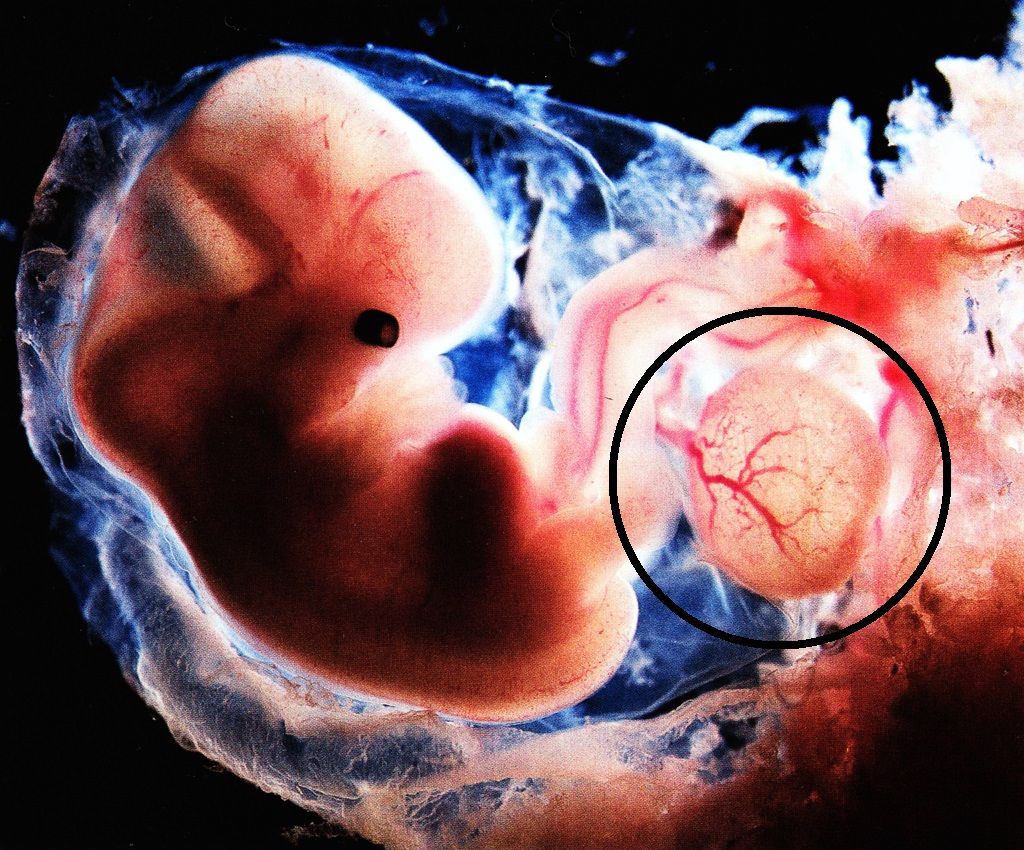 99. To order a copy for £14.61, go to guardianbookshop.com.
99. To order a copy for £14.61, go to guardianbookshop.com.
Ectopic pregnancy | Pregnancy Birth and Baby
An ectopic pregnancy is when a fertilised egg implants itself outside the womb, usually in one of the fallopian tubes. This means the embryo will not be able develop into a baby as the fallopian tube is not large enough to support the growing embryo.
In a few cases an ectopic pregnancy causes no noticeable symptoms and is only detected during routine pregnancy testing. However, most women do have symptoms and these usually become apparent between week 4 and week 12 of pregnancy.
Early diagnosis and treatment is important to prevent life-threatening bleeding and also, if possible, so the tube can be saved and it can continue to work.
Symptoms of ectopic pregnancy
If you have an ectopic pregnancy, you might experience:
One-sided abdominal pain — typically on one side of your abdomen (tummy), which can be persistent and severe.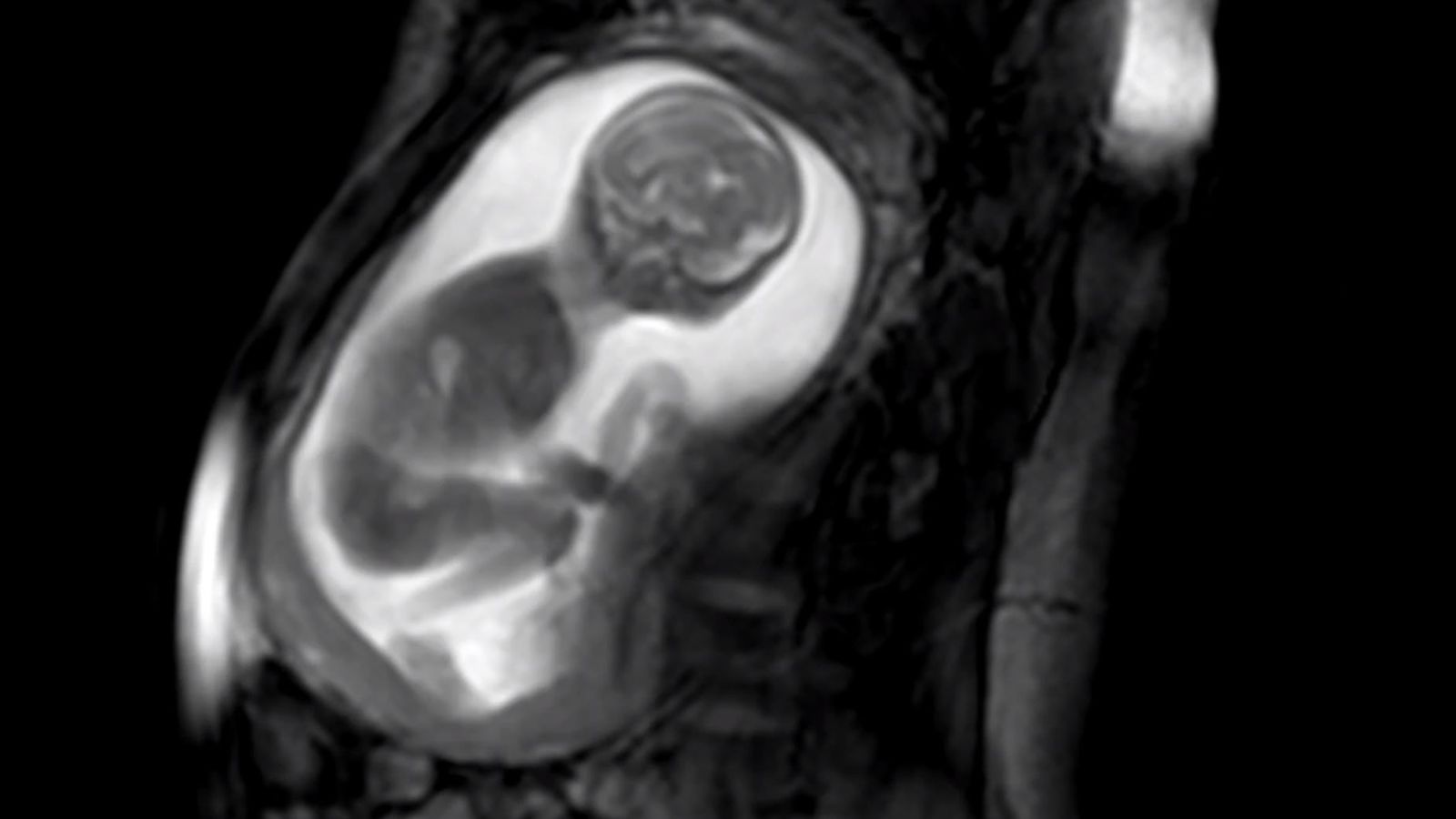
Vaginal bleeding — vaginal bleeding is a different type of bleeding from your regular period. It often starts and stops, and can be bright or dark red in colour. Some women mistake this bleeding for a regular period and do not realise they are pregnant.
Shoulder tip pain — shoulder tip pain is felt where your shoulder ends and your arm begins. It is not known exactly why shoulder tip pain occurs, but it usually occurs when you are lying down and is a sign that the ectopic pregnancy is causing internal bleeding. The bleeding is thought to irritate the phrenic nerve, which is found in your diaphragm (the muscle used during breathing that separates your chest cavity from your abdomen). The irritation to the phrenic nerve causes referred pain (pain that is felt elsewhere) in the shoulder blade.
Bowel pain — you may experience pain when passing urine or stools.
Diarrhoea and vomiting — an ectopic pregnancy can cause similar symptoms to a gastrointestinal disease and is often associated with diarrhoea and vomiting.
How is ectopic pregnancy diagnosed?
It can be difficult to diagnose an ectopic pregnancy from the symptoms alone, as they can be similar to other conditions.
Some of the tests used to diagnose an ectopic pregnancy include:
How is an ectopic pregnancy treated?
If an ectopic pregnancy is detected at an early stage, a medication called methotrexate is sometimes needed to stop the egg developing. The pregnancy tissue is then absorbed into the woman’s body.
Methotrexate is not always needed, as in around half of cases the egg dies before it can grow larger.
Ectopic pregnancies detected at a more advanced stage will require surgery to remove the pregnancy sac.
If an ectopic pregnancy is left to develop, there is a risk that the fertilised egg could continue to grow and cause the fallopian tube to split open (rupture), which can cause life-threatening internal bleeding.
Signs of a ruptured fallopian tube are:
- sudden, severe, sharp pain
- feeling faint and dizzy
- feeling nauseous or vomiting
- diarrhoea
- shoulder tip pain
A ruptured fallopian tube is a medical emergency. If you think that you or someone in your care has experienced this complication, call 000 and ask for an ambulance.
If you think that you or someone in your care has experienced this complication, call 000 and ask for an ambulance.
Why does an ectopic pregnancy happen?
In a normal pregnancy an egg is fertilised by sperm in one of the fallopian tubes, which connect the ovaries to the womb. The fertilised egg then moves into the womb and implants itself into the womb lining (endometrium), where it grows and develops.
An ectopic pregnancy occurs when a fertilised egg implants itself outside the womb. It most commonly occurs in a fallopian tube (this is known as a tubal pregnancy), often as the result of damage to the fallopian tube or the tube not working properly.
Less commonly (in around 2 in 100 cases), an ectopic pregnancy can occur in an ovary, in the abdominal space or in the cervix (neck of the womb).
In many cases, it’s not clear why a woman has an ectopic pregnancy. Sometimes it happens when there’s a problem with the fallopian tubes, such as them being narrow or blocked.
The following are all associated with an increased risk of ectopic pregnancy:
- pelvic inflammatory disease (PID) — an infection of the female reproductive system, typically caused by chlamydia
- smoking
- having a previous history of ectopic pregnancies
- previous surgery on your fallopian tubes — such as an unsuccessful female sterilisation procedure, or other surgery in your pelvis or abdomen
- fertility treatment, such as IVF — taking medication to stimulate ovulation (the release of an egg) can increase the risk of ectopic pregnancy
- becoming pregnant while using an intrauterine device (IUD) or intrauterine system (IUS) for contraception — it’s rare to get pregnant while using these, but if you do you’re more likely to have an ectopic pregnancy
- becoming pregnant while using the mini (progesterone-only) pill
- having endometriosis
- increasing age — the risk is highest for pregnant women who are aged 35-40
In around half of all cases, there are no obvious risk factors.
Support
The loss of your pregnancy at any stage can have a huge impact on you and your partner. One day you are pregnant and planning your future life with your child, and then within a short time, your pregnancy ends. The ending of an ectopic pregnancy is a form of miscarriage – and the feelings that a woman and her partner may experience can be similarly difficult.
It is not uncommon for feelings of grief and bereavement to last for 6 to 12 months, although these feelings usually improve with time.
Pregnancy, Birth and Baby offers free and confidential support and counselling to women, their partners, friends and relatives. Call on 1800 882 436.
Many women affected by a miscarriage benefit from counselling. SANDS (miscarriage, stillborn and neonatal death support) provide support groups for parents and their family whose baby has died through stillbirth, miscarriage, ectopic pregnancy and medically advised termination.
Information on SANDS groups in Australian states can be obtained from the SANDS Australia website.
Trying for another pregnancy
It is normally recommended that you wait for at least 2 menstrual cycles before trying for another pregnancy, as this will allow time for your fallopian tubes to recover (if treated with methotrexate, you will need to wait at least 3 to 4 months). However, many women are not emotionally ready to try for another pregnancy so soon.
Your chances of having a successful pregnancy will depend on the underlying health of your fallopian tubes.
If you cannot conceive in the normal way then fertility treatment such as in-vitro fertilisation (IVF) may be an option.
IVF treatment is where an egg is fertilised by a sperm outside the womb (usually in a test tube) and, after fertilisation, the embryo is surgically implanted into the womb.
What Is Ectopic Pregnancy? | Definition and Treatment
Ectopic pregnancy is when a pregnancy grows outside of your uterus, usually in your fallopian tube. Ectopic pregnancies are rare but serious, and they need to be treated.
What’s an ectopic pregnancy?
Normal pregnancies develop inside your uterus, after a fertilized egg travels through your fallopian tube and attaches to your uterine lining. Ectopic pregnancy is when a fertilized egg attaches somewhere else in your body, usually in your fallopian tube — that’s why it’s sometimes called “tubal pregnancy.”
Ectopic pregnancies can also happen on your ovary, or somewhere else in your belly.
Ectopic pregnancies are rare — it happens in about 2 out of every 100 pregnancies. But they’re very dangerous if not treated. Fallopian tubes can break if stretched too much by the growing pregnancy — this is sometimes called a ruptured ectopic pregnancy. This can cause internal bleeding, infection, and in some cases lead to death.
Am I at risk for an ectopic pregnancy?
We don’t always know the cause of ectopic pregnancy. But you may be more likely to have an ectopic pregnancy if you:
have had an STD, pelvic inflammatory disease or endometriosis
have already had an ectopic pregnancy
have had pelvic or abdominal surgery
are 35 or older
smoke cigarettes
If you get pregnant after you’ve been sterilized or while you have an IUD, it’s more likely to be ectopic. But this is very rare, because these types of birth control are super effective at preventing pregnancy.
Can I get pregnant again after an ectopic pregnancy?
Most people who have an ectopic pregnancy can have healthy pregnancies in the future, depending on the treatment you had and the condition of your fallopian tubes. If one of your fallopian tubes was removed or your tubes are scarred, it may be more difficult to get pregnant. If you have an ectopic pregnancy, you’re more likely to get another one in the future.
More questions from patients:
Can a doctor re-implant my ectopic pregnancy in my uterus? And is treating an ectopic pregnancy the same thing as having an abortion?
No, a doctor can’t re-implant or move your ectopic pregnancy into your uterus. Ectopic pregnancies can’t grow into fetuses: A pregnancy won’t survive if it’s ectopic, because a fertilized egg can’t grow or survive outside your uterus.
Untreated ectopic pregnancies can cause internal bleeding, infection, and in some cases lead to death. When you have an ectopic pregnancy, it’s extremely important to get treatment from a doctor as soon as possible.
Treating an ectopic pregnancy isn’t the same thing as getting an abortion. Abortion is a medical procedure that when done safely, ends a pregnancy that’s in your uterus. Ectopic pregnancies are unsafely outside of your uterus (usually in the fallopian tubes), and are removed with a medicine called methotrexate or through a laparoscopic surgical procedure. The medical procedures for abortions are not the same as the medical procedures for an ectopic pregnancy.
Ectopic pregnancies are dangerous when left untreated and can’t lead to a baby. If you’re pregnant and have severe pain or bleeding, go to the emergency room right away. If you have any other symptoms of ectopic pregnancy, contact your doctor or nurse as soon as you can. The earlier an ectopic pregnancy is found and treated, the safer you’ll be.
Was this page helpful?
Help us improve – how could this information be more helpful?
How did this information help you?
You’re the best! Thanks for your feedback.
Thanks for your feedback.
Would You Grow A Baby In An Artificial Womb?
Imagine, for a minute, that you haven’t been born yet (a bit of a stretch, I know, but stay with me).
You don’t know whether you’re going to come out male or female, and you can choose to enter one of two worlds. First you’re offered Society A, in which one biological sex carries and births babies, taking on the risks of becoming ill or dying in childbirth. Or you can opt for Society B, where all embryos grow safely in artificial wombs. What would you do?
That’s the question Anna Smajdor, associate professor of philosophy at the University of Oslo, wants us to ask ourselves. She’s calling for more research into something called ectogenesis, an umbrella term for technology that allows babies to be grown artificially outside the womb.
‘Being pregnant and giving birth are still significantly risky for women’s health and, in other contexts, similar levels of risk are treated as very serious problems,’ Smajdor tells me. ‘A woman is more likely to die in pregnancy or childbirth than from measles, if she catches it. And yet we have big public health campaigns against measles.’
At the moment, it is not possible to grow a baby outside the womb for the full 40 weeks of pregnancy. But Dr Carlo Bulletti, a fertility specialist with more than 40 years’ experience researching reproductive medicine, believes it could be in a decade’s time.
‘If there was adequate financial support, I think 10 years would be reasonable,’ he says. ‘The benefits of ectogenesis from a scientific point of view are enormous.’
Getty Images
He points to research that has seen fertilised embryos kept alive for almost a fortnight using a ‘co-culture system’ designed to mimic the uterine environment. At the other end of the spectrum, premature lambs born at an age equivalent to a 23-24-week human foetus have been sustained for four weeks in fluid-filled ‘biobags’ by researchers at the Children’s Hospital of Philadelphia.
Bulletti believes it is possible to create a system that allows babies to develop for ‘the entire period from implantation to delivery’ but, right now, laws prohibit researchers from keeping an embryo alive outside the uterus for longer than 14 days (the most scientists have managed so far is one day shy of this). Bulletti thinks these regulations could be relaxed in future, just as past rules surrounding IVF treatments have changed to accommodate new technologies.
‘Ectogenesis could be the solution for the one in 500 women with anatomical uterine abnormalities and women who have undergone a hysterectomy,’ he says. ‘Think about the women that have had their uteruses removed after having cancer. Or the women that want to have a baby and can’t because of some chronic disease.’
It’s not only mothers who might be spared the risks of pregnancy and birth but foetuses too, adds Smajdor. ‘The most common time to die if you’re a foetus that isn’t aborted is during childbirth,’ she says. ‘The advantage of the foetus not being in a woman’s body is that we can absolutely control what it gets exposed to and, if we need to operate on it, we don’t have to go through a woman’s body to do that.’
Evie Kendal, a lecturer of bioethics and health humanities at Deakin University in Victoria, and author of Equal Opportunity and the Case for State Sponsored Ectogenesis, believes an optional replacement for pregnancy could also have enormous social benefits for women.
A woman is more likely to die in pregnancy or childbirth than from measles, if she catches it. And yet we have big public health campaigns against measles
‘Access to ectogenesis would prevent career interruptions caused by pregnancy-related illness and giving birth,’ she tells me. ‘Beginning a discussion of childcare responsibilities where neither partner has already had to alter their work routine due to pregnancy or birth avoids some of the disadvantage that may lead women to assume primary carer responsibilities by default.’
Kendal predicts that artificial womb technology could also revise our view of femininity more generally. ‘There are a lot of assumptions made about women as a result of their reproductive potential,’ she says. ‘Considering a method of having children that does not require a woman’s body has the potential to radically alter some of these assumptions, including that women are not a good investment for professional development’.
Anna Smadjor adds: ‘As a woman in societies like the UK, your body is regarded as a potentially pregnant thing, which gives you very particular duties in relation to it but also imposes very significant risks on you.’
‘The data that shows that, in countries where women have access to contraception, careers and financial independence, birth rates go down and the age at which women have their first child goes up,’ she adds.
Getty Images
It’s easy to see the theoretical benefits of a Matrix-style reproductive future but, in reality, there are currently very few medical researchers pushing for full ectogenesis.
Dr Matthew Kemp, principal obstetrics and gynaecology research fellow at the University of Western Australia, is part of a team that successfully kept premature lamb foetuses alive in an artificial womb. The animals lived for two weeks in medical grade plastic bags containing saline solution, while hooked up to a device that oxygenated their blood. The team hopes to secure FDA approval to trial this technology with human foetuses in around 2023 or 2024, with the aim of improving survival rates for extremely premature infants (born between 21 and 24 weeks).
When I ask Kemp whether this system could ever be used for an entire pregnancy, he says this is ‘extremely unlikely’ and that it is not an avenue his team is ‘at all interested in’.
‘This particular technology requires some surgical intervention and obviously a fertilised embryo is not going to be amenable to that,’ he explains. ‘It’s very much designed to be a treatment platform for babies that are born pre-term.’
While full ectogenesis is not on the radar for many reproductive scientists, director of Oklahoma State University’s ethics centre, Professor Scott Gelfand, thinks it could develop more quickly than researchers anticipate.
‘It’s going to happen unintentionally,’ he says. ‘We’re going to get better at saving babies that are born prematurely at an earlier stage of development – imagine you could get that down to let’s say 16 weeks – and, meanwhile, we’re going to have developments which will extend the period that a fertilised embryo can live. At some point in time, the two are going to connect – possibly without us even intending for them to.’
Think about the women that have had their uteruses removed after having cancer. Or the women that want to have a baby and can’t because of some chronic disease
Gelfand is concerned that artificial wombs may become viable before we’ve had a chance to consider how to regulate the technology. He fears that companies could use the availability of ectogenesis to reduce maternity leave or even to discriminate against women who choose natural gestation by regarding it as a self-indulgent ‘lifestyle choice’.
Perhaps even more concerning is the questions that new technology could raise around abortion rights. The right to end a pregnancy is rooted in women’s bodily autonomy – so what would happen if unwanted foetuses could survive without our bodies? Could a couple who changed their minds about wanting an artificially-gestated baby ask for it to be terminated? What would happen if one parent wanted the child and the other didn’t?
Gelfand asks: ‘Can states force women to utilise ectogenesis if they want to terminate their pregnancy? And if they can do so, can the woman give up all rights to the foetus? Does she have to support it? Pay for it?’
These are the questions that ‘society needs to address before ectogenesis becomes a reality,’ he says.
In order for widespread artificial womb technology to reduce women’s reproductive burdens, rather than add to them, Anna Smajdor says people need to have already re-evaluated their view of motherhood before it arrives. ‘I don’t want to present a future utopia that is brought to us purely by virtue of ectogenesis being developed,’ she says. ‘What really is going to make the difference is how enlightened our societies are – and we’re definitely not there yet.’
‘My hope is that the research goes slowly until we have some serious societal discussions,’ agrees Gelfand. ‘We have to talk about these things a lot more – we’re like children playing with matches’
The truth about ectopic pregnancy care | Your Pregnancy Matters
Though ectopic pregnancies comprise just 1% to 2% of all pregnancies, the condition is the leading cause of pregnancy-related maternal death in the first trimester, usually due to lack of medical intervention. In the U.S., 76 deaths were attributed to ectopic pregnancy between 1998 and 2007.
Treatment is recommended. If the fallopian tube ruptures, the patient is more than likely going to lose the tube. Some patients might also lose the ovary on that side. If a rupture occurs, there will be a risk for abdominal hemorrhage – severe bleeding that can be fatal without immediate medical attention.
It is possible for an early ectopic pregnancy to end in miscarriage on its own. However, in most cases it does not, and medical intervention is needed. To treat ectopic pregnancy, the doctor will recommend either a surgical procedure or a medication called methotrexate. In rare occasions, the drug can have serious side effects, such as liver or skin reactions, so it is important to discuss the most appropriate treatment with your doctor.
Symptoms of ectopic pregnancy
Ectopic pregnancy will register a positive home pregnancy test. It won’t be clear whether the pregnancy has a chance to be viable until one of your first trimester prenatal appointments when an ultrasound will help determine where the egg is implanted.
The initial signs of ectopic pregnancy are similar to symptoms sometimes found in healthy early pregnancies:
- Light vaginal bleeding
- Mild abdominal cramping
- Missed period
- Tender breasts
Patients sometimes shrug off these symptoms, having experienced them in a previous successful pregnancy. Not every episode of cramping or light spotting indicates ectopic pregnancy. Others might wait to be examined at their first prenatal appointment.
However, if an ectopic pregnancy develops past a few weeks, the patient will likely have more severe symptoms such as sharp abdominal or pelvic pain and dizziness.
90,000 Ectopic pregnancy 9,0001
An ectopic pregnancy is a pregnancy that occurs outside the uterus. As a rule, fertilization takes place in the widest part of the fallopian tube. The fertilized egg then travels to the uterus, where it is to be implanted. An ectopic pregnancy occurs when an egg gets stuck in its path and begins to develop inside the tube. This is known as a tubal pregnancy. Implants can also occur in the cervix, ovaries, and abdomen, but tubal pregnancies are by far the most common.With very few exceptions, the fetus cannot survive outside the uterus. Without treatment, tissue growth can rupture, resulting in destruction of the surrounding maternal structures and massive loss of blood, which can be life-threatening.
An ectopic pregnancy may not show any signs, or it may manifest itself as a normal pregnancy at first, with a positive hCG pregnancy test. The first clinical symptoms usually appear 4 weeks after the last normal menstrual cycle and may include abdominal pain and bleeding.There may also be shoulder pain. If the fallopian tube ruptures, it causes severe bleeding, loss of consciousness, and shock. This is a medical emergency.
A tubal pregnancy occurs due to problems in transporting a fertilized egg through the fallopian tube. The fallopian tubes are lined with structures called cilia that help move the ovum. It is believed that a decrease in the number of cilia can slow down transport and lead to tubal pregnancy.This can occur as a result of scarring of the uterine tissue or as a result of the action of certain chemicals or drugs. Risk factors include:
– Inflammation of the fallopian tubes – salpingitis; or a pelvic infection – pelvic inflammatory disease. These infections are usually caused by gonorrhea, ureaplasma, or chlamydia.
– Using a low-quality intrauterine device as a contraceptive method
– Previous surgeries such as tubal ligation, tubal adhesion and dilatation and curettage
– Ectopic pregnancy earlier in another tube
– Pathology of the fallopian tubes due to birth defects
– Smoking
– Taking certain fertility drugs
– Daughters of mothers who took synthetic estrogen diethylstilbestrol during pregnancy
Diagnosis is often based on hCG blood tests and transvaginal ultrasound.
If an ectopic pregnancy is detected early, methotrexate may be given to dissolve the tissues of the pregnancy. However, this method has a number of complications and limitations. In other cases, laparoscopic surgery is performed. The affected fallopian tube is usually removed.
90,000 “A real miracle.” A resident of Voronezh was able to carry a baby outside the uterus | HEALTH: Medicine | HEALTH
Voronezh doctors performed a unique operation – a child was born outside the uterus in the perinatal center of the VOKB No. 1. 38-year-old resident of Boguchar, Voronezh region, Evgenia Baturina , without suspecting anything, carried the baby in the abdominal cavity. At the same time, the girl, who was named Anastasia, was born completely healthy. This case is considered unique even by global standards.
“AiF-Voronezh” talked to a happy mother and doctors.
One in a Million
According to the press service of the Voronezh Region Health Department, according to world statistics, the development of a child in the abdominal cavity occurs in about 0.4% of cases of ectopic pregnancy.At the same time, the outcome is almost always unfavorable – the fetus does not survive under these conditions. Such a pregnancy is extremely dangerous for a woman. Maternal mortality reaches 20%.
It is interesting that for a long time Evgenia did not know about her position. Only when she felt pain in the abdomen, she went to the doctor at the Bogucharsk regional hospital. Evgenia Baturina learned about her pregnancy at the 34th week. At the same time, ultrasound did not show that this was a very difficult case.
“When a woman visits a doctor at a short time, of course, first of all, it is checked whether it is a uterine pregnancy or not.In this case, the woman applied for a long time. Uzist saw a large fruit. I think he could not even imagine that the child could reach this size, being outside the uterus. So you can’t blame ultrasound diagnostics doctors for not making a diagnosis right away. After all, they were faced with a one-in-a-million case. Yes, it was a fetus that was essentially “nowhere”, just in the stomach. And if they found out about this at a short time, then, of course, they would not keep the pregnancy. Nature is such that pregnancy cannot develop outside the uterus.The fact that in this case the child has grown up to 36 weeks and was born alive and healthy is a real miracle, ”says Galina Nikonova , head of the remote obstetric advisory center of VOKB №1 .
The fact that the pregnancy was ectopic was learned already on the operating table during the caesarean section. The woman was transported to Voronezh from the regional hospital for a completely different reason.
“She was admitted to the Voronezh Perinatal Center at the 36th week of pregnancy.The fetus was in a transverse position, the woman complained of pain. Soon it became known about intra-abdominal bleeding. It was impossible to leave her in the regional hospital. It was decided to urgently transport the patient, – notes obstetrician-gynecologist of the perinatal center of the VOKB No. 1 Tatyana Gushchina . – What kind of diagnoses we did not put her in absentia – starting with placental abruption and ending with uterine rupture. But that we are talking about an ectopic pregnancy, we could not even think. The patient arrived in Voronezh in a state close to critical.And only when we started the operation, it became clear what we were dealing with. The situation was out of the ordinary. It was necessary to act quickly. A team of qualified doctors was urgently assembled. In total, 11 people participated in the operation, which lasted an hour and a half. The well-coordinated work of the entire staff of the perinatal center played an important role in the success of the operation. As a result, late in the evening on January 17, a healthy girl, Anastasia, was born without any deviations, weighing 2150 grams and growing 46 centimeters.Mom is fine too. In addition, the woman also retains her fertile function. ”
“There are only 17 such cases all over the world”
According to doctors, the woman was really lucky. If, for example, the placenta was attached to the intestinal vessels, the result would not be so happy. In this case, several meters of the intestine would have to be resected (removed – ed.), And my mother would have remained disabled. There was a high probability of death for both – both the mother and the baby.
“For 44 years of work, I was faced for the first time with the fact that in such a situation a healthy child was born.When it became clear what we were dealing with, I confess that I got scared, – says Galina Nikonova. – In this situation, another logical question arises. How could a woman, being on such an impressive period, not notice her position? Despite being pregnant, she was menstruating. And all because the uterus was not involved in the process. Perhaps the placenta was giving some kind of malfunction, but they were insignificant. ”
The resident of Boguchar herself, for whom this child became the third, admits that she did not have any special feelings.She continued to work until the moment when she first came to the doctor. And at the 34th week, I had to urgently go on maternity leave.
“I didn’t feel sick, I didn’t feel bad. I myself am not very thin, so the increase in the abdomen was not striking. Only when everything inside began to hurt, I went to the hospital, – Evgenia Baturina admits. – When I found out about pregnancy, of course, I was shocked. I couldn’t believe it. Moreover, I was twice pregnant before – I have a 19-year-old daughter and a six-year-old son – but the feelings were completely different.Until recently, I worked as a pastry chef at a local restaurant. On December 19, she was registered for pregnancy, and almost a month later Anastasia was born. About what kind of pregnancy I had, I found out only after the operation. So I didn’t have time to get scared. But I still can’t believe it. Doctors repeat: “This is a real miracle.” And the truth is some kind of miracle. Many thanks to the doctors for saving me and my daughter. In Boguchar, they probably could not have saved. Now I can say for sure that I will not give birth anymore. “
Mom says that now she and her daughter are doing well and are already preparing for discharge. The baby is gradually gaining weight – in two and a half weeks she gained 300 grams. Now Evgenia seeks to quickly return to her native Boguchar, where her husband, children and grandson are waiting for her.
“What makes this case unique? There are several components. First, we are faced with an ectopic pregnancy, which has grown to such a date. Secondly, despite the fact that the child was in abnormal conditions, his development fully corresponded to the term.Thirdly, the obstetric service worked so that it was able to take the situation into its own hands at the last critical moment and prevent massive bleeding and death of the mother and child. Fourth, the child was born healthy, – emphasizes Lyudmila Ippolitova, chief freelance neonatologist of the Voronezh Region Health Department . – Yes, in our practice there were cases of ectopic pregnancy, but they all ended in the death of the fetus. According to open sources, over the past 150 years, there were only 17 such cases with a successful delivery in the world.In Russia, I managed to find one similar case of the birth of a child described in the literature – in Chechnya in 1915. And now we have witnessed another miracle. ”
See also:
90,000 Voronezh obstetricians rescued a child born outside the uterus
02/04/2020
Doctors of the Voronezh Perinatal Center performed a unique operation to save the life of a mother and a child born outside the uterus.
According to Olga Samofalova, chief obstetrician-gynecologist of the Voronezh Region Health Department, this case is unique even by world standards.According to world statistics, pregnancy in the abdominal cavity outside the uterus occurs in about 1.4% of cases of ectopic pregnancy, while ectopic localization is no more than 1-2% of all pregnancies. At the same time, bearing a child in the abdominal cavity almost always ends up unfavorably. The fetus rarely develops normally and is viable. In 40-95% of cases, he dies at the beginning or middle of pregnancy. Localization of pregnancy in the abdominal cavity is extremely dangerous for a woman.Maternal mortality reaches 20%.
The fetus did not develop in the uterus, but in the abdominal cavity of a woman who for a long time did not realize that she was pregnant. Therefore, I did not register at the antenatal clinic. Feeling the fetal movement, the woman consulted a doctor at the place of residence at the Bogucharsky district hospital. The examination confirmed the pregnancy, however, it was not possible to determine the unusual localization even with the help of ultrasound. World practice shows that it is very difficult to assume an abdominal pregnancy, since the tissues surrounding the fetus create the appearance of a normal uterus.
According to Sergei Khotz, deputy chief physician for obstetrics and gynecology, VOKB No. 1, the woman’s condition caused anxiety among district obstetricians, so they consulted with colleagues of the regional perinatal center for telemedicine communication, and then promptly delivered the pregnant woman to the HRC accompanied by a midwife from Bogucharskaya RB.
January 17 at 22.30 A team of doctors of the perinatal center of the VOKB No. 1 performed an operation, as a result of which a living healthy girl weighing 2,150 g and a height of 46 cm was removed from the abdominal cavity.The operation was difficult. The woman needed a transfusion of 3 liters of blood. Now mom and baby are doing well and are getting ready for discharge. The newborn is the third child now in a large family. Congratulations to the happy parents and the entire staff of the perinatal center.
90,000 what is it, is it dangerous for a woman and how to avoid it
Table of Contents
Ectopic pregnancy is a serious condition.It is dangerous to the mother and fetus. This condition can provoke intra-abdominal bleeding, cause serious health problems, and even lead to death. Therefore, it is classified as a complication requiring emergency medical care.
Let’s figure out how to determine an ectopic pregnancy in the early stages. Let’s try to understand how to avoid it and what to do in case of detection.
Symptoms
The main symptoms are:
- Delayed menstruation
- Bloody discharge from the genitals (usually smearing)
- pulling pains in the lower abdomen
- breast engorgement
Also signs of ectopic pregnancy include lack of appetite, nausea and vomiting, which join the above symptoms.
If the pathology of gestation is interrupted, it is accompanied by hemorrhage into the abdominal cavity. In this case, the patients complain of a sharp pain that radiates to the anus, lower back and legs. You can also record general weakness and a decrease in blood pressure. In some cases, loss of consciousness occurs.
Unfortunately, signs of an ectopic pregnancy at an early stage are not clearly expressed. Women can seek medical help when complications develop. That is why you should be regularly monitored by a gynecologist.Perhaps at the next appointment, he will reveal a pathology.
Reasons
Factors that cause disruption of the normal process of movement of a fertilized egg into the uterine cavity can lead to a pathological condition.
The main reasons, therefore, include:
- abortion
- endometriosis
- the presence of an intrauterine device
- tumors in the genitals and anomalies of their development
- previous operations on the organs of the reproductive system
- inflammation of the appendages
Also, the cause of ectopic pregnancy can be assisted reproductive technologies (including the use of stimulation of ovulation), hormonal contraception, delayed sexual development.
Important! An already transferred disease increases the risks of developing a repeated pathological condition.
Classification
There are several classifications of the pathological condition.
Depending on the location of the ovum, an ectopic pregnancy can be:
- pipe
- ovarian
- abdominal
- unspecified
Depending on the course, the condition can be progressive, disturbed and frozen (if the fetus dies for up to 28 weeks).Complicated and uncomplicated ectopic pregnancy is distinguished by the presence of complications.
Diagnostics
How to define an ectopic pregnancy? A simple questioning of the patient is not enough for this. This is due to the fact that the signs of pathology are not typical. A woman can inform her doctor about a delay in menstruation, changes in tastes, recurrent bouts of nausea and vomiting. When interrupted, the condition may resemble ovarian apoplexy, appendicitis, or other acute pathology of the pelvic and abdominal organs.
That is why a comprehensive survey is mandatory. The doctor not only assesses the symptoms of an ectopic pregnancy, but also receives objective data on the condition of the patient’s reproductive organs.
Diagnostics include:
- Study of urine or blood for hCG (chorionic gonadotropin)
- Ultrasound of the pelvic organs
If you suspect a rare form of pathology, the gynecologist may additionally recommend a woman to undergo magnetic resonance imaging .Usually it is carried out when the ovum is fixed in the abdominal cavity, on the ovary, on the scar on the uterus.
Does the test show an ectopic pregnancy and can it be used as a home diagnostic method? Yes! But only if the patient is unable to consult a doctor at the first suspicion of a pathological condition. Moreover, in the early stages, one should focus on a weakly expressed, fuzzy second control strip.
Do not trust home test systems 100%.
Treatment
Ectopic pregnancies are treated exclusively by surgery . Surgical interventions are carried out after the diagnosis is made and in the absence of bleeding or in its presence and severe clinical manifestations (in advanced cases).
When choosing a treatment method, the following factors are taken into account:
- a woman’s desire to have a child in the future
- Feasibility of preserving fallopian tubes
- the presence of an adhesive process and the risks of recurrence of pathology
Interventions are performed predominantly laparoscopically.
The following operations are possible:
- Tubectomy. Intervention involves removal of the fallopian tube
- Tubotomy. In this operation, the ovum is removed. Fallopian tube preserved
If there is a high blood loss, the patient undergoes an abdominal operation to save the life of the patient. In this case, the fallopian tube is always removed. If the remaining pipe does not have pathologies, then even after such an intervention, the woman may in the future have children.In order to accurately find out the possibilities of conceiving and carrying a fetus, laparoscopy is performed some time after the intervention. It allows not only to assess the state of the organ, but also to separate the adhesions (if any). This will reduce the risks of re-ectopic pregnancy.
Warning
To prevent the development of a pathological condition, follow:
- Prevent the development of inflammatory processes in the organs of the genitourinary system. If such a process has already arisen, it is important to carry out its treatment in a timely manner, which will be selected by a gynecologist
- At the planning stage, undergo a full examination in order to identify pathogenic microbes in the body (mycoplasma, chlamydia, etc.)). If they are found, treatment is carried out (together with a sexual partner)
- Prevent unwanted pregnancy. To do this, you should use high-quality and reliable contraceptives that will avoid abortion
If termination of pregnancy is unavoidable, its low-traumatic methods should be chosen at the optimal time (up to 8 weeks). In this case, abortion should be carried out exclusively by an experienced doctor and only in a medical institution. In the future, the woman should be monitored by a gynecologist.
If a woman has suffered an ectopic pregnancy, she should definitely undergo a rehabilitation course. He will retain further fertility. It is also very important to regularly see a gynecologist and follow all the doctor’s recommendations.
Conception can be planned no earlier than in a year. In this case, it is advisable for a woman to register as early as possible.
Advantages of contacting MEDSI
- Emergency facilities. The clinic has its own laboratory and equipment for rapid diagnostics.Operations are also possible. The clinic in St. Petersburg is open around the clock
- Modern equipment. We have laparoscopic operating rooms and intensive care unit
- Experienced doctors and other personnel. Our specialists have the skills and knowledge to provide comprehensive patient support
- Comfortable hospital. It has wards of various classes with everything necessary for patients
- No queues and opportunities for consultations at a convenient time
To clarify the specifics of the treatment of an ectopic pregnancy or to make an appointment with a gynecologist, just call +7 (812) 336-33-33.Our specialist will answer all your questions. Recording is also possible through the SmartMed application.
A baby was born in the Nizhny Novgorod region after an ectopic pregnancy – Rossiyskaya Gazeta
The rarest case in medical practice occurred in the Nizhny Novgorod region. The woman, unknowingly, carried a healthy child in the abdominal cavity, and not in the uterus. Doctors call his birth a real miracle.
Resident of Balakhna Oksana Kuzhevatova is 37 years old. The pregnancy with the firstborn was planned and proceeded surprisingly smoothly.The woman registered at the consultation on time and regularly visited doctors. All the ultrasound examinations carried out showed: the baby is healthy, he has an excellent heartbeat and no deviations from the norm.
On November 1, at the 37th week of pregnancy, Oksana had a severe stomach ache, and with suspicion of appendicitis, she was taken to the Emergency Hospital in the city of Dzerzhinsk.
– The patient was admitted to the surgical department with symptoms of an “acute abdomen”, – Valery Bazanov, a doctor-surgeon of the emergency hospital, told RG.- A consultation was held, at which they decided to operate on the pregnant woman. And what was the surprise of the doctors when a child was found in her abdominal cavity during an operation. The chief obstetrician-gynecologist of Dzerzhinsk, Elena Aleksandrova, was immediately summoned, and the operation continued with her participation.
According to the surgeon, on November 2 at 3.30 a live boy was born. Its weight is 2750 grams, and its height is 51 centimeters. The baby was immediately transported to the Dzerzhinsk perinatal center. The baby was connected to ventilation for several hours, and there were also difficulties with feeding him.But very quickly the baby learned to breathe and eat on his own. His mother spent a day in intensive care, after which, in a satisfactory condition, she was transferred to her child.
Now little Arseniy and Oksana are feeling well and have already been discharged home.
– I want to say a huge thank you to all the doctors of the emergency hospital and Elena Evgenievna, because now nothing threatens either my life or the life of my child! Apparently, this Earth needs my baby for something, ”Oksana Kuzhevatova thanked her saviors.
As the chief obstetrician-gynecologist of Dzerzhinsk Elena Aleksandrova told “RG”, the fact that the child was born alive is a real miracle. The medical literature has not yet described such cases of successful gestation in the abdominal cavity.
– It’s hard to say how it happened. The egg was attached in the area of the right appendages, and the placenta began to develop there. At the same time, the uterus was absolutely unchanged. The vascular bundle went from the corner of the uterus to the placenta. Where these vessels came from, I cannot say for sure yet.Now a histological examination is being carried out, the conclusion of which will shed light on all our questions, – said Alexandrova.
During the operation, the gynecologist saw the appendages and the fallopian tube on the left side, while on the right side there were no tubes or appendages. There was only a huge fetal egg with a placenta. Probably, the fertilized egg was originally in the tube, which for some reason ruptured. She went into the abdominal cavity and “sat down” on the right ovary, on the basis of which the placenta developed.Histologists can still say for sure: the ovum consisted of two chambers, one of them ruptured, and the amniotic fluid leaked into the abdominal cavity of the pregnant woman. That is why her stomach ached.
– It was a very difficult operation technically, but it went well. I am happy with such a wonderful outcome. There was no heavy bleeding, no internal organs were affected, including the intestines. I have been working as a gynecologist for more than 30 years, I go to all severe cases. I thought that I had seen everything in my life, but only now I realized that this is far from the case! – said the doctor.
According to Alexandrova, there is nothing surprising in the fact that the ultrasound did not reveal the correct location of the fetus. This was influenced by many factors: from the transverse position of the child to the thickness of the placenta. In this case, it is extremely difficult to make the correct diagnosis. If doctors see that the fetus is in the abdominal cavity, they urgently send the woman to terminate the pregnancy, because this poses a serious danger to her life. (In this case, it turns out that Oksana Kuzhevatova was lucky – she could have lost her child much earlier.) That is why in the literature there are statistics only on cases of premature ectopic pregnancy, and the birth of a healthy baby is classified as an incredible event.
Now Elena Aleksandrova is preparing a report for the forum of obstetricians and gynecologists, which will be held in Nizhny Novgorod at the end of November.
In the Voronezh region, a woman gave birth to a child that did not develop in the womb
Little Nastya was born on Epiphany Christmas Eve. While the baby is asleep, Evgenia’s mother tells what a miracle the birth of her third child was for her.
“It was hard, hard and scary. You scroll in your head that the case is really unique, barely survived, ”says Yevgenia Baturina.
Evgenia did not know that she was pregnant. When I felt severe pain in the abdomen, I turned to the antenatal clinic at my place of residence, in Boguchar. The doctor diagnosed pregnancy, and even, to the surprise of the expectant mother, 34 weeks. The woman was admitted to the hospital, but the pain began to intensify. The doctors were also unable to determine the position of the fetus.And they decided to urgently hospitalize the pregnant woman in the perinatal center in Voronezh.
“She was transferred to us with a different diagnosis and impaired blood flow in the fetus. We did not prepare in any way. We learned that she had such a pregnancy during a gastric dissection, ”said Galina Nikonova, head of the remote obstetric center of the Voronezh regional hospital.
What the doctors saw during the operation was shocking. The almost fully formed fetus was not inside the uterus, but outside.The placenta attached itself to the appendages without damaging the vital organs. All this time the child was developing normally. The emergency surgery lasted an hour and a half – not much for such a complex case, and the doctors performed it flawlessly.
The baby does not yet know how unique she is. But now the most usual care is already being carried out for her, like for all other babies in the perinatal center.
Two kilograms one hundred grams – the baby was born at the 38th week of pregnancy. Five days of intensive care monitoring with light respiratory support, then another week in the therapy department, and it became clear to the doctors that the child could be transferred to the ward with the mother.Today their health is no longer a cause for concern among doctors.
“According to statistics, 50% of these children are definitely born with some kind of anomalies. The fact that an almost full-term baby was born here, without any violations, will probably be an isolated case in world practice, ”said Tatyana Gushchina, head of the obstetric department of the Voronezh perinatal center.
Only 17 such cases have been described in the world when healthy babies were born. After all, an ectopic pregnancy is dangerous for both the mother and the child.
“Fertilization does not take place in the uterus. It takes place in the fallopian tube. For some reason, the fertilized egg fell out of the tube and remained to live where it was not supposed to, ”says Galina Nikonova, head of the remote obstetric center of the Voronezh regional hospital.
“A unique rare case. The fertilized egg can attach to the liver, spleen, ovaries, intestines, peritoneum. And, of course, delivery is very dangerous, because it threatens with large blood loss, “says the head of the Institute of Obstetrics.Kulakova Roman Shmakov.
As a result of the operation, the doctors were able to save not only the life and health of the child, but also the reproductive functions of the mother. Now they are being prepared for discharge. At home in Boguchar, little Nastenka is waiting for a big family: Evgenia has a son, an adult daughter, and even a grandson has already appeared.
Ectopic pregnancy: causes, symptoms | Pampers RU
Ectopic pregnancy is rare, however, its frequency increases every year. If, nevertheless, this happened, the woman needs emergency medical help.In this article, you will learn what an ectopic pregnancy is, how it manifests itself, what are the risk factors for such a pregnancy, and treatment options.
What is an ectopic pregnancy
With a healthy pregnancy, the fertilized egg moves through the fallopian tubes to the uterus, attaches to the wall of the uterus and begins to grow. In an ectopic pregnancy, the egg is attached outside the uterine cavity. The likelihood of an ectopic pregnancy is relatively low – only 2% of all pregnancies.In over 90% of ectopic pregnancies, the fertilized egg attaches to the wall of the fallopian tube. This complication is called a tubal pregnancy. The development of the embryo outside the uterus is impossible – accordingly, the development of such a pregnancy is also impossible.
Tubal pregnancy can rupture the fallopian tube and cause internal bleeding. In this case, urgent medical attention is required, as this condition can be life-threatening.
For women who become pregnant as a result of in vitro fertilization (IVF), there is a 1% chance of developing a heterotopic pregnancy.A heterotopic pregnancy is a pregnancy in which two eggs are fertilized. In this case, one enters the uterus, and the second begins to develop outside it. That is, a uterine pregnancy occurs simultaneously with an ectopic pregnancy. For women who become pregnant naturally, the risk of heterotopic pregnancy is much lower and is estimated to range from 1 in 4,000 to 1 in 30,000.
Signs and symptoms of an ectopic pregnancy
Signs and symptoms of an ectopic pregnancy can be difficult to notice as they can appear in the early stages, when you may not even know that conception has occurred.In addition, some of the signs of an ectopic pregnancy overlap with the signs of a normal, healthy pregnancy that you may see in the first trimester.
Although the risk of developing an ectopic pregnancy is not so high, it is useful to be aware of the early symptoms, including:
urge to have a bowel movement;
vaginal bleeding. Early bleeding can also be implantation, so it is recommended to consult a doctor with this kind of discharge;
pain in the lumbar region;
pain in the rectal area;
pulling pain in the lower abdomen. If you experience this symptom, be sure to see a doctor.
Urgent symptoms
As pregnancy progresses, symptoms may worsen. Call your doctor or emergency room right away if you notice any of the following symptoms:
severe pain in the lower abdomen;
weakness, dizziness or fainting. Vertigo may be caused by internal bleeding from ruptured fallopian tube.
Take care of yourself and keep in mind that only a gynecologist can diagnose an ectopic pregnancy.
Diagnosis
Your doctor can make a diagnosis using an ultrasound scan of where the pregnancy is developing and / or a blood test to measure the level of the pregnancy hormone hCG. For accuracy, the analysis may need to be passed twice with a difference of several days. In some cases, the doctor may notice an ectopic pregnancy during the very first ultrasound.
Treatment of an ectopic pregnancy
An ectopic pregnancy cannot move to the uterus, and the development of the fetus is possible only in it. Therefore, the treatment of an ectopic pregnancy is the termination of pregnancy by surgery or medication. If you are experiencing an ectopic pregnancy, your doctor will discuss with you which option is right for you.
Drug method
Most often, the drug methotrexate is used to terminate an ectopic pregnancy.This drug stops the growth of cells in the embryo, which leads to abortion. The advantage of the medication method is that the woman may be able to avoid surgical treatment. Medical treatment of an ectopic pregnancy is possible if the tube has not ruptured and only in the very early stages of pregnancy. The medical method has a large number of contraindications.
Surgical method
If the fallopian tube has ruptured, an emergency operation is required.In some cases, surgery is indicated even if the tube has not ruptured. The operation involves either removing only the ovum (the tube is preserved), or removing the tube along with the ovum. In the absence of significant abdominal bleeding, the operation is usually performed by the method of laparoscopy: under general anesthesia, the laparoscope is inserted through a small incision in the anterior abdominal wall. During the operation, the ovum is removed, and the damaged sections of the tube are restored, but much more often the tube is removed.
In fewer cases, a larger abdominal incision may be required. For example, if the diagnosis of an ectopic pregnancy took place at a later date, or if the doctor suspects a ruptured fallopian tube.
The doctor will explain all the risks and side effects of surgery, which may include bleeding and infection. Follow-up is necessary after surgery.
Causes of an ectopic pregnancy
An ectopic pregnancy occurs when a fertilized egg cannot enter the uterus through the fallopian tube.Adhesions resulting from previous operations, inflammatory or infectious diseases that have arisen during life can block the path of the egg to the uterus. Other possible factors are the abnormal structure of the fallopian tubes, as well as a violation of their nerve conduction (as a result of which there are problems with the transport of the fertilized egg through the tubes to the uterine cavity), inflammation, abnormal development of the fertilized egg, or hormonal imbalance.
Risk factors
Although about 50% of women with an ectopic pregnancy do not have any of these complications, factors that increase the risk of an ectopic pregnancy are:
past ectopic pregnancies;
underwent operations on the uterus, fallopian tubes and ovaries;
transferred sexually transmitted infections;
postponed inflammatory or infectious diseases of the pelvic organs;
endometriosis.
Other factors that increase the risk of developing an ectopic pregnancy:
age over 35 years;
history of conception problems;
smoking.
Moral support
When experiencing an ectopic pregnancy, it is perfectly natural to experience anxiety, fear, grief. The treatment itself can also make you feel very tired, or feel as if you are still pregnant, which can aggravate the mental pain.In such a situation, communication with a psychotherapist helps. Support can be found on online forums – from other women with similar experiences. Close people can also provide the necessary support and care during this difficult period. Give yourself time to rest, recover physically, and gradually come to terms with what has happened.
Pregnancy after an ectopic pregnancy
If you are wondering if a healthy pregnancy is possible after an ectopic pregnancy, it is best to ask your doctor this question as he will be able to advise you based on your personal situation.If the fallopian tube has not been removed, the risk of re-ectopic pregnancy increases. However, even if one tube has been removed, the egg can be fertilized in another tube, resulting in a healthy uterine pregnancy.
Please note that a history of ectopic pregnancy is considered a risk factor. And in the event of subsequent pregnancies, be vigilant and monitor the symptoms and your well-being until the doctor confirms that the implantation took place in the uterus.
Frequently Asked Questions
- Can a positive pregnancy test be obtained with an ectopic pregnancy?
Most home tests determine pregnancy by the concentration of the pregnancy hormone – hCG. HCG will be present in the urine until the ectopic pregnancy is fully treated.
- How to understand if pregnancy is ectopic?
Only a doctor can confirm or exclude an ectopic pregnancy. Signs that a woman may notice include abnormal vaginal bleeding, sharp pain in the pelvis, abdomen, or shoulder, and feeling weak or dizzy.
- Where is the pain felt during an ectopic pregnancy?
Pain may be felt in the abdomen, pelvis, or shoulder.
